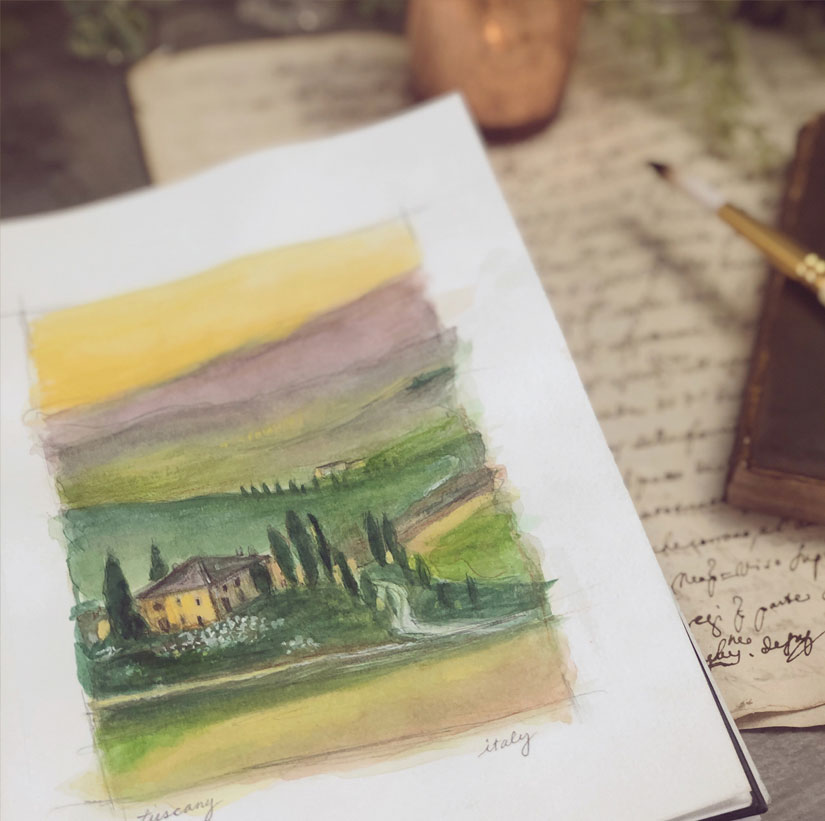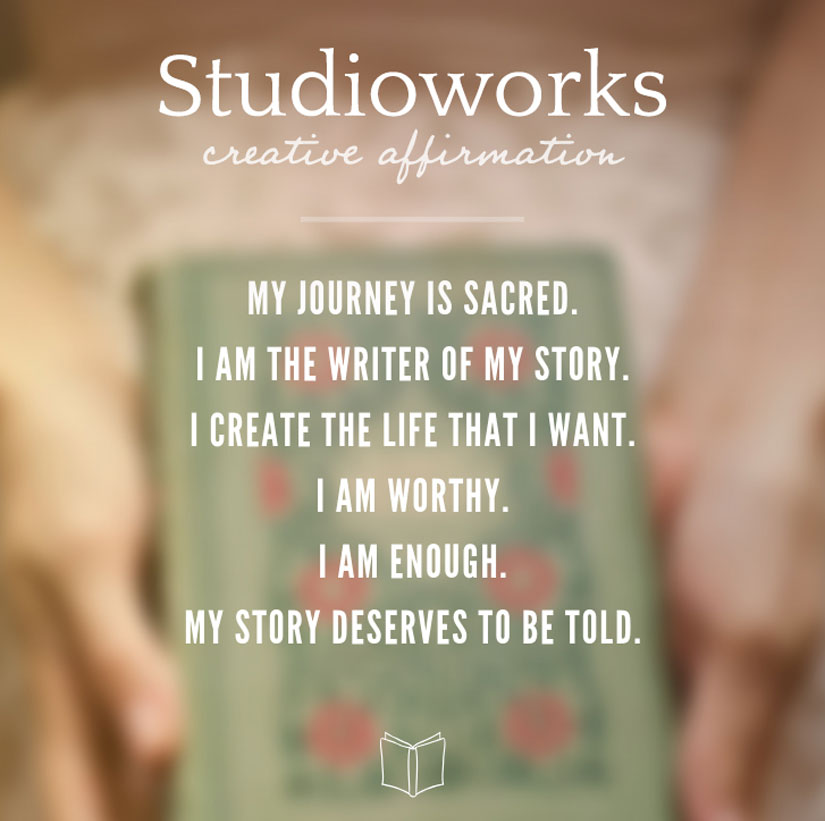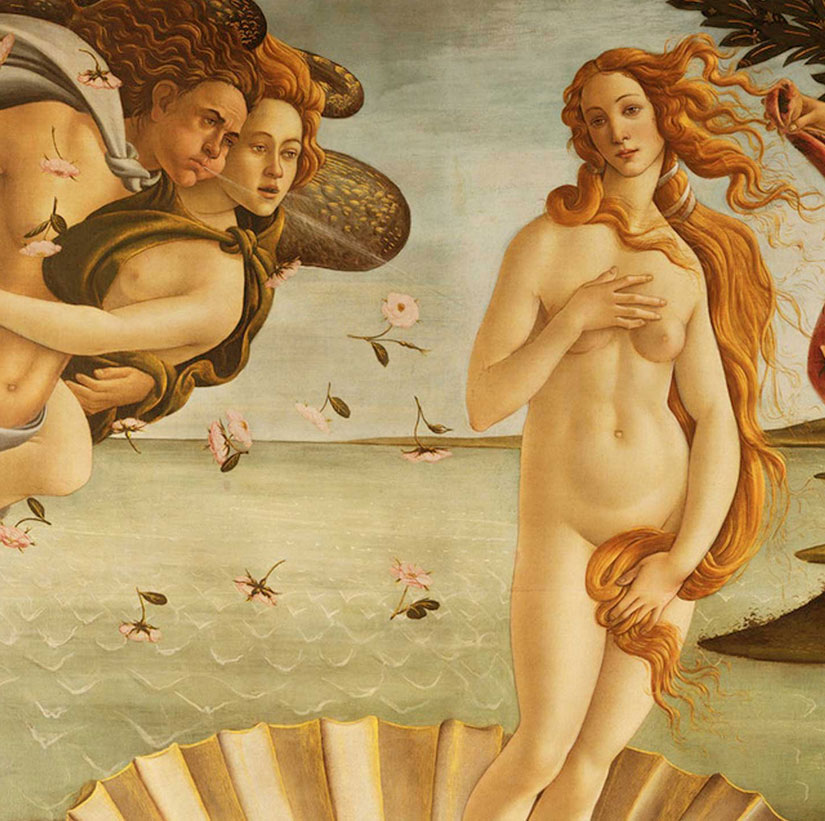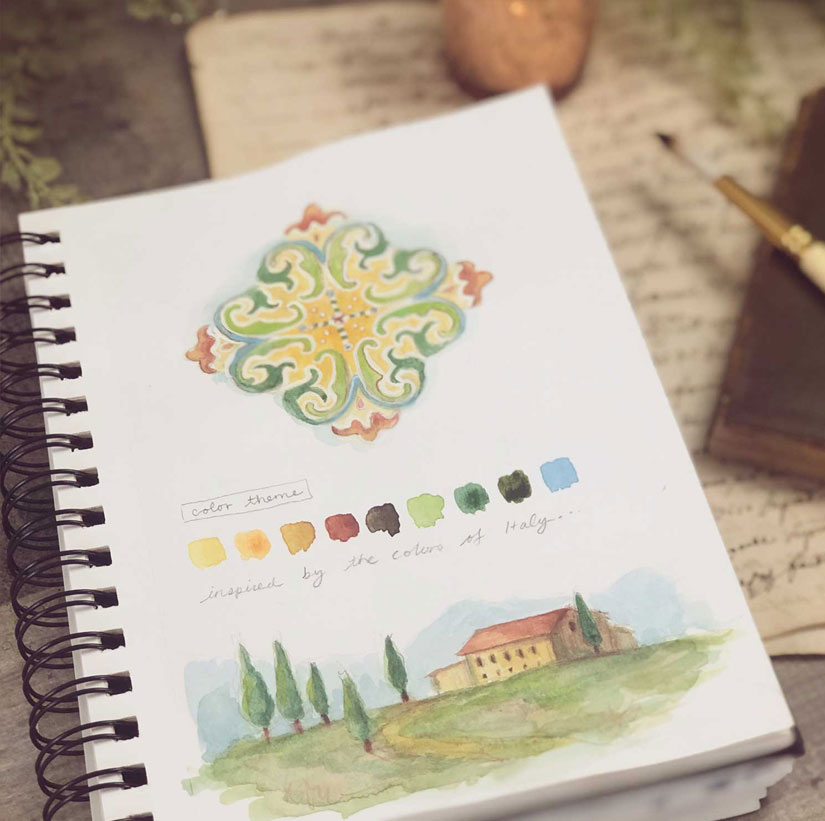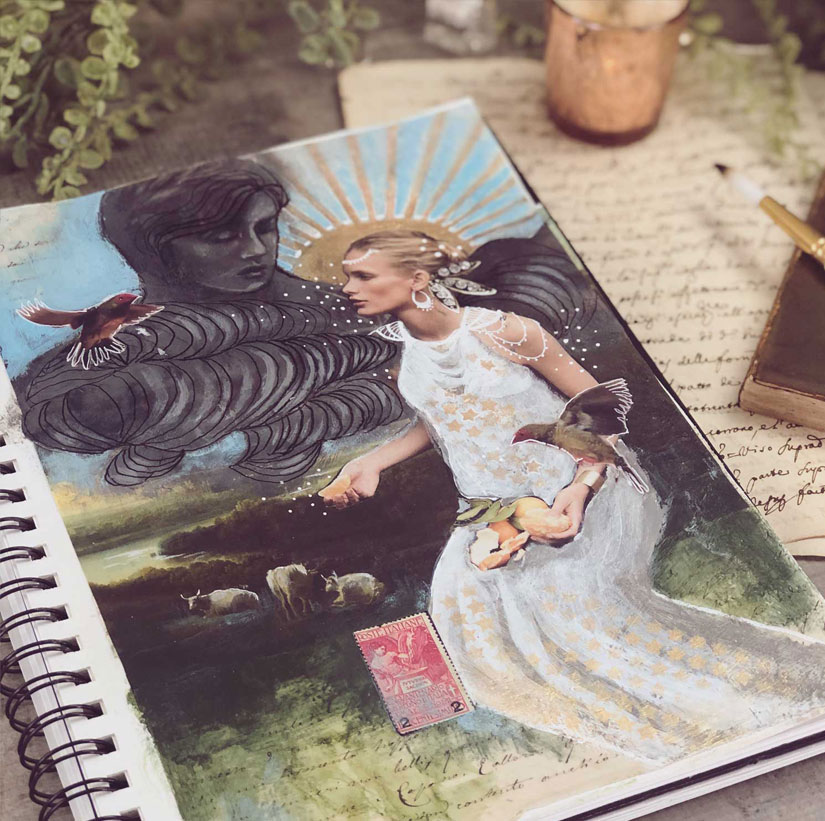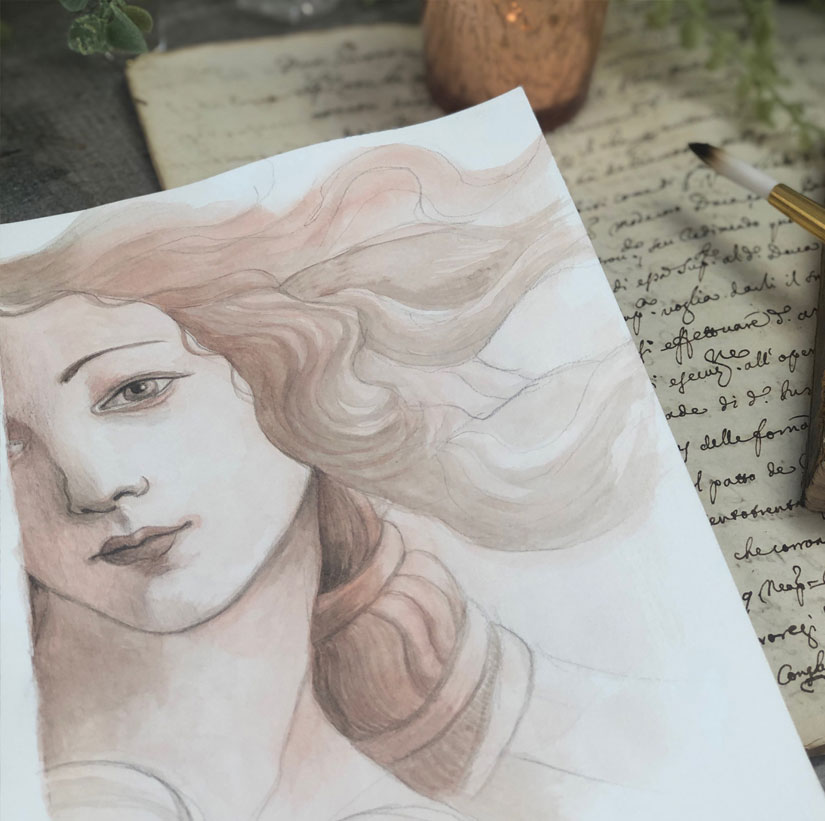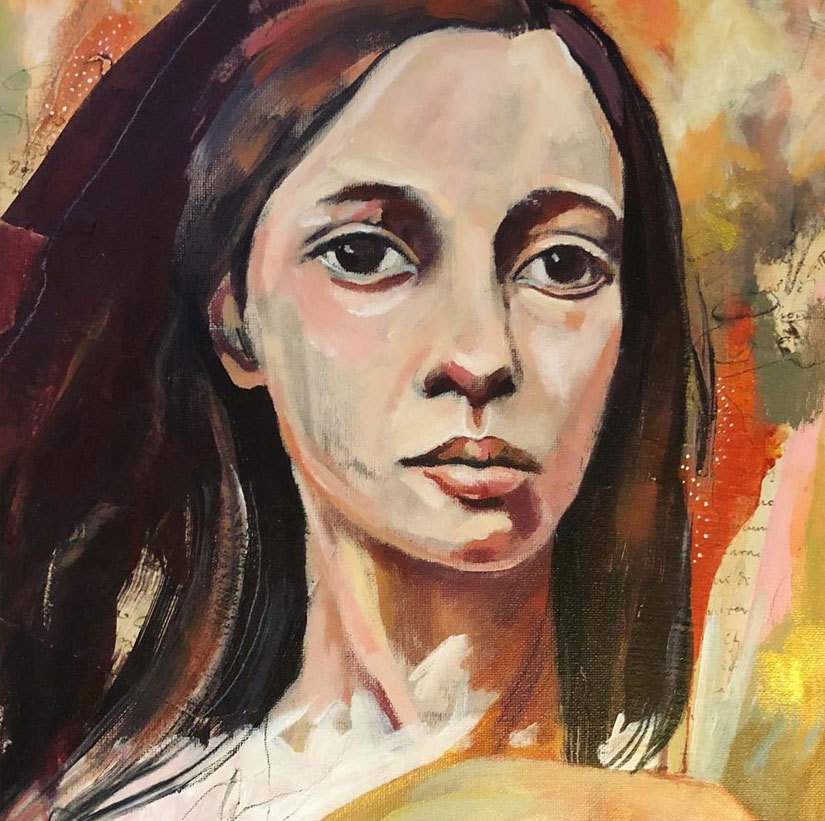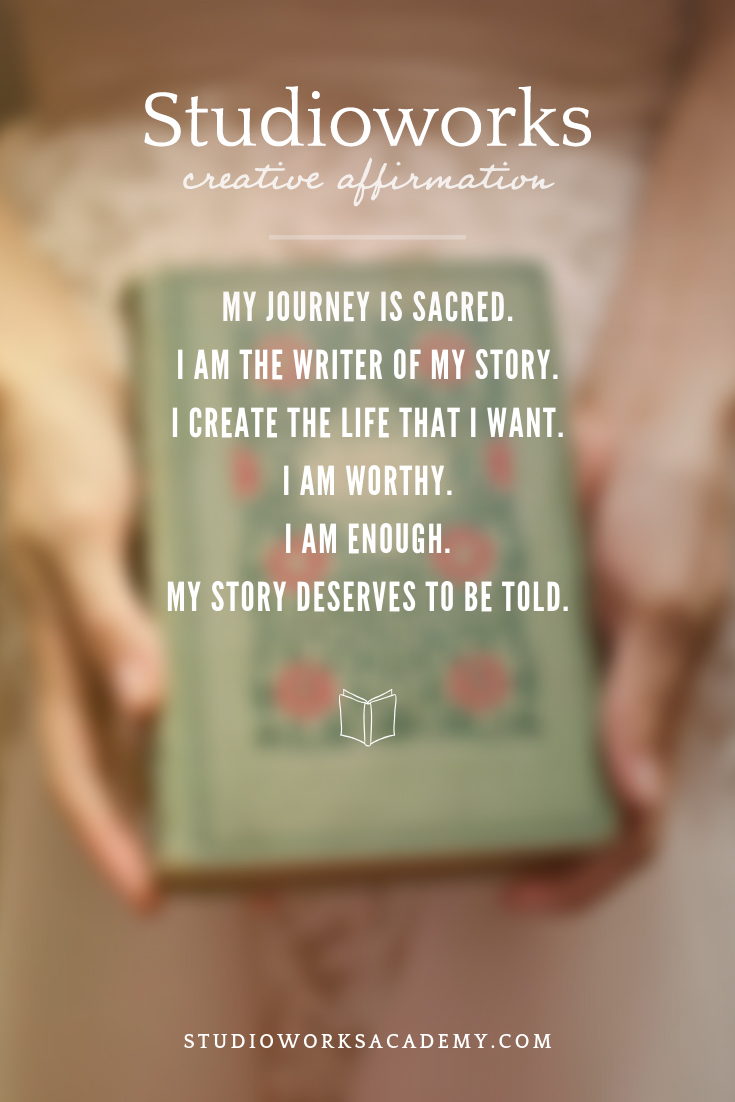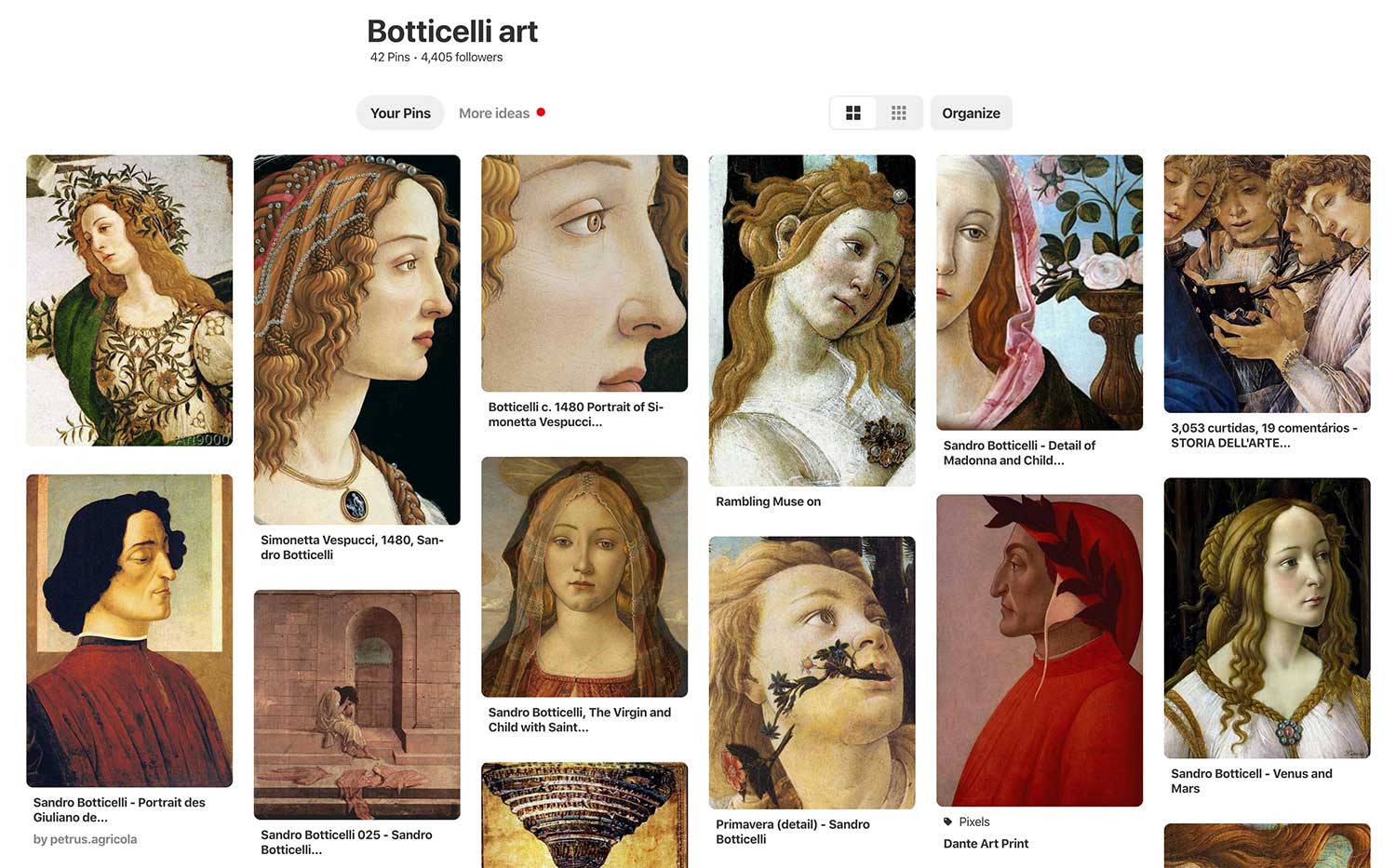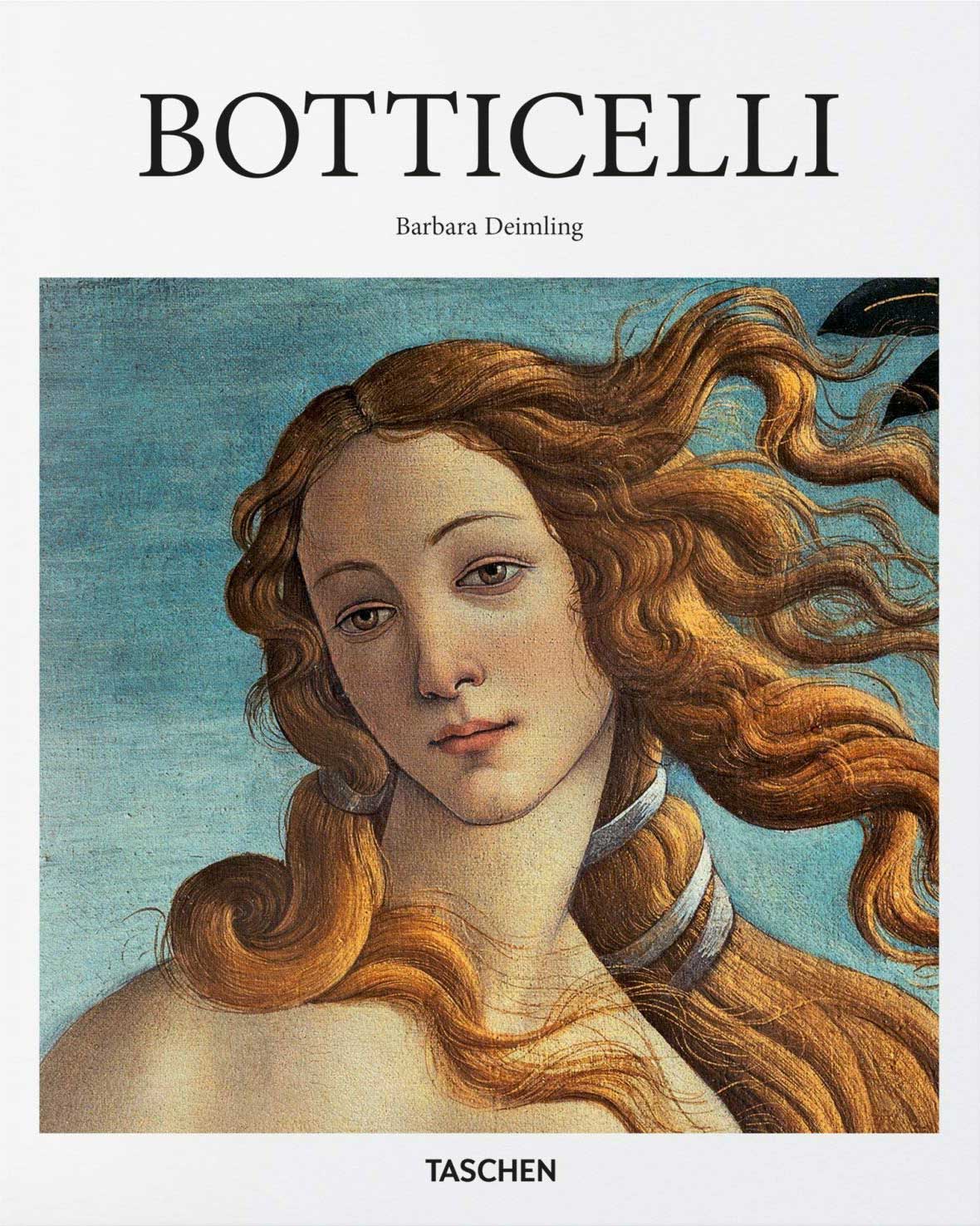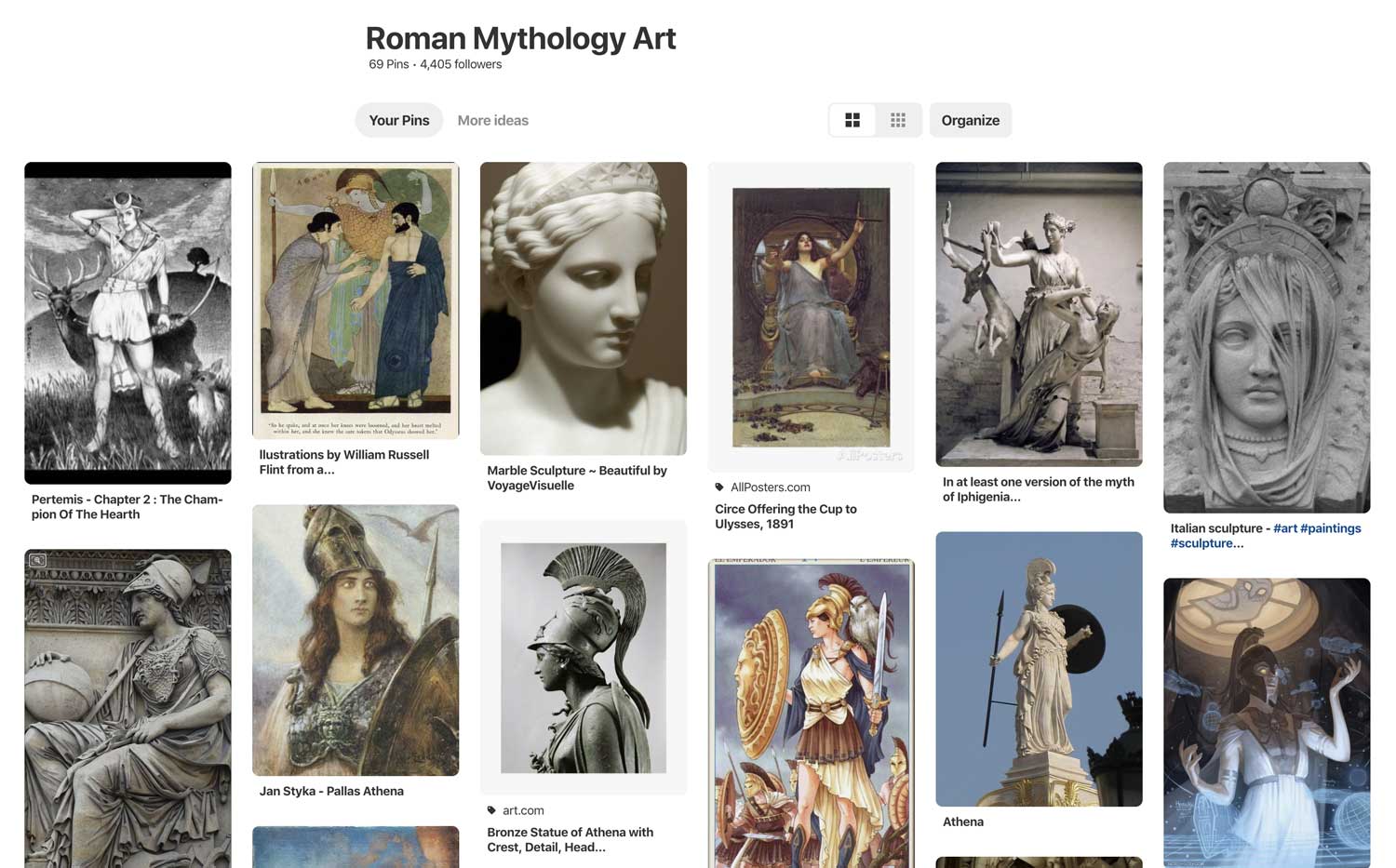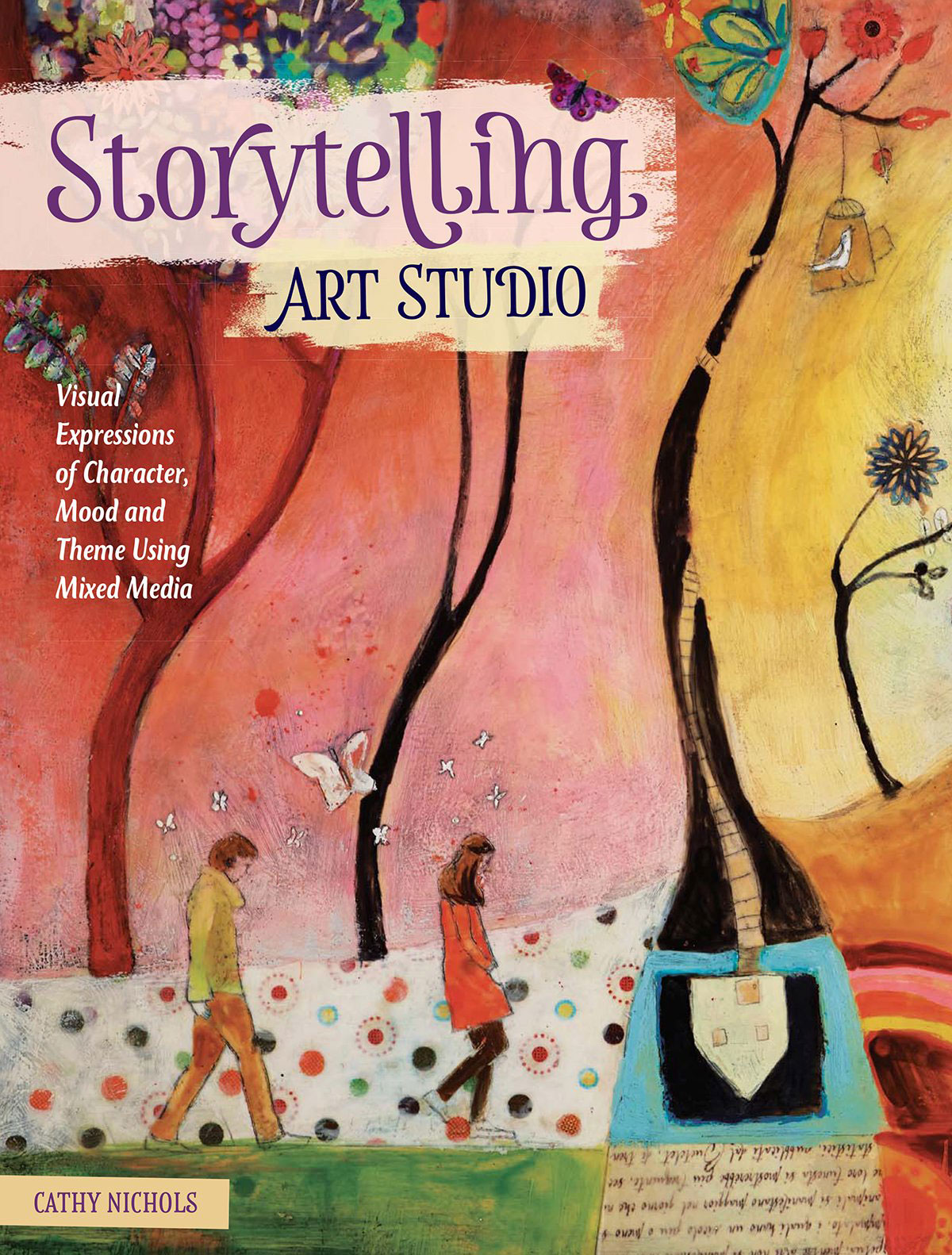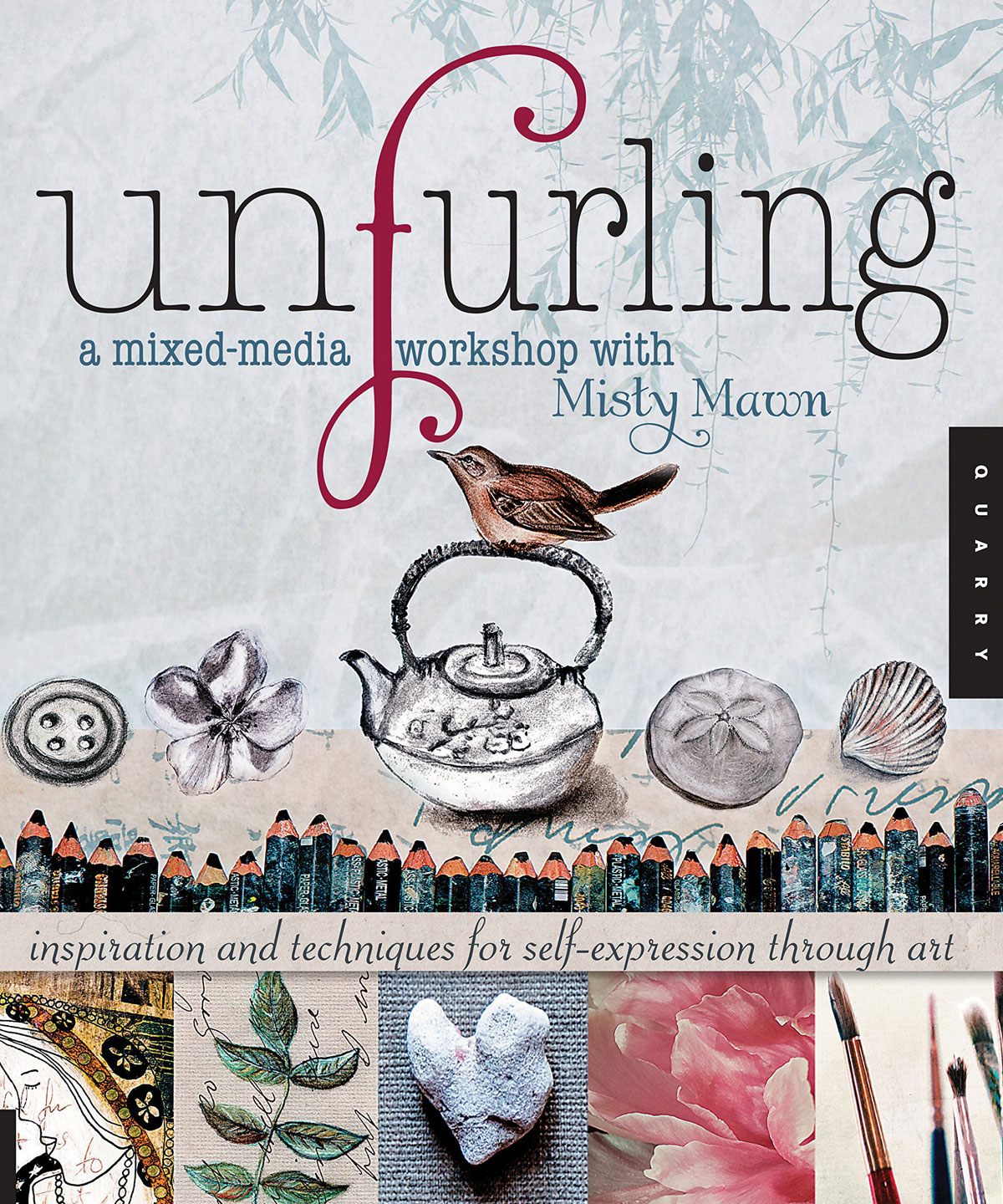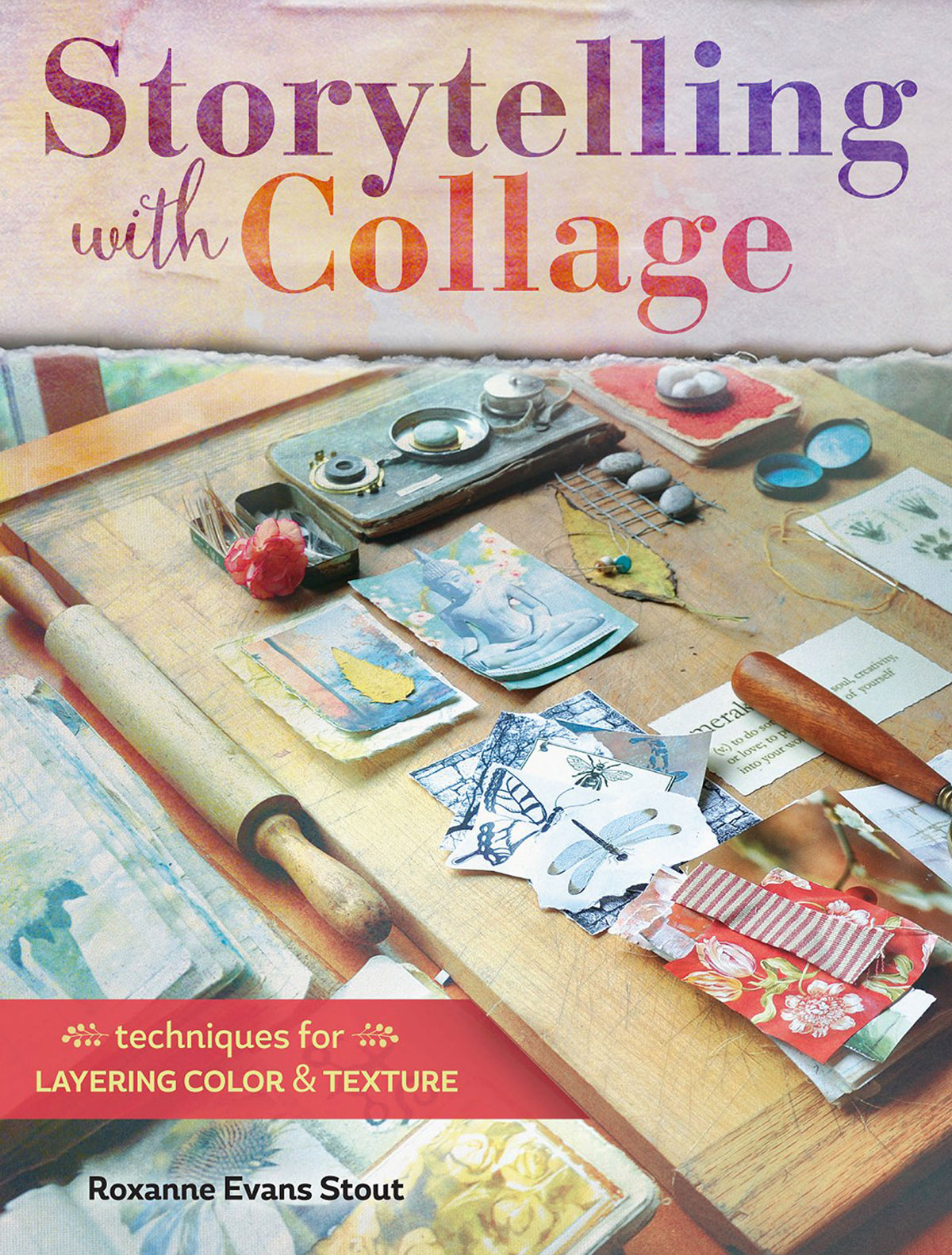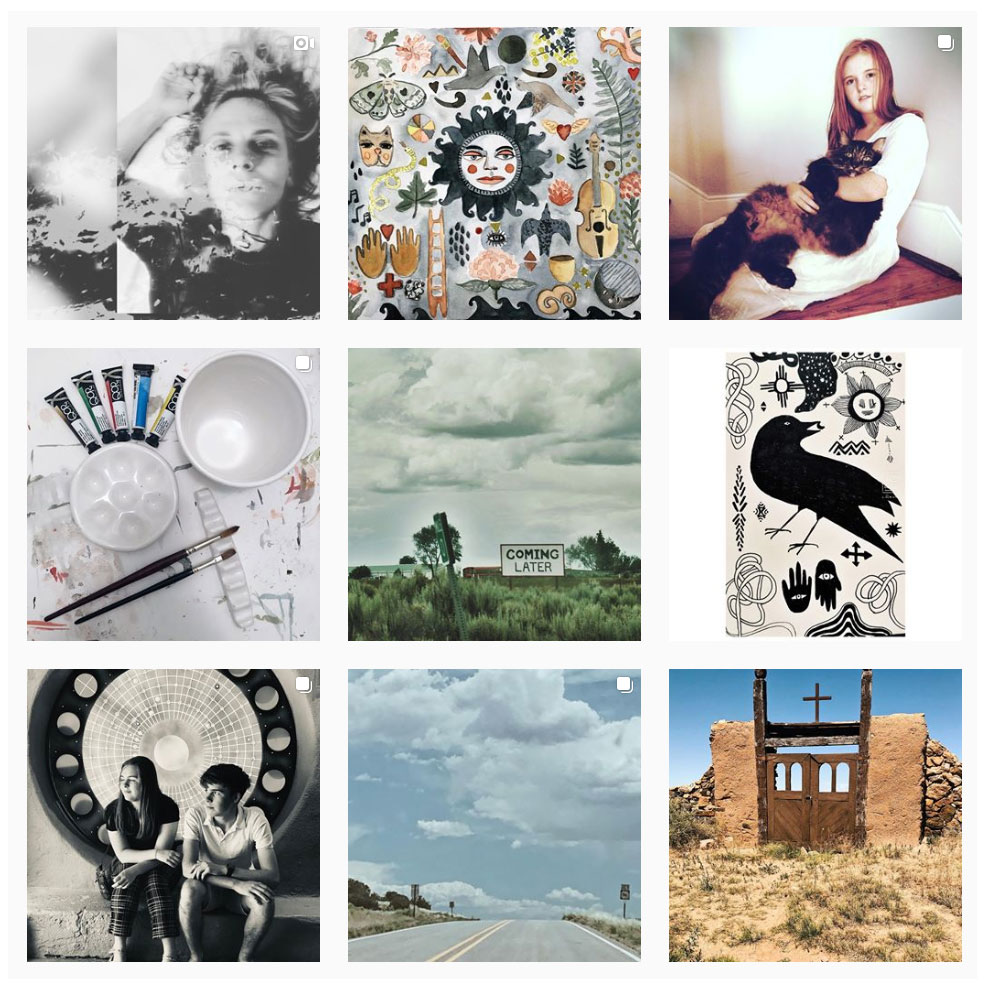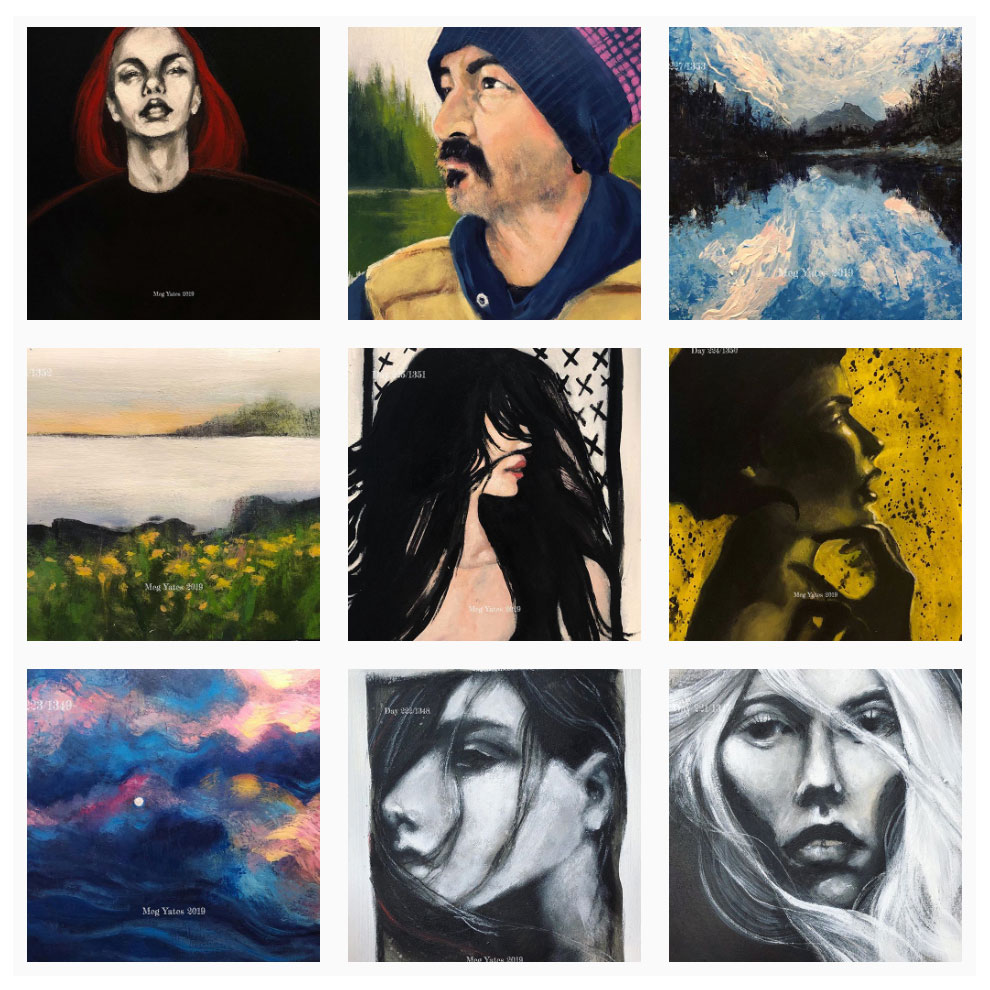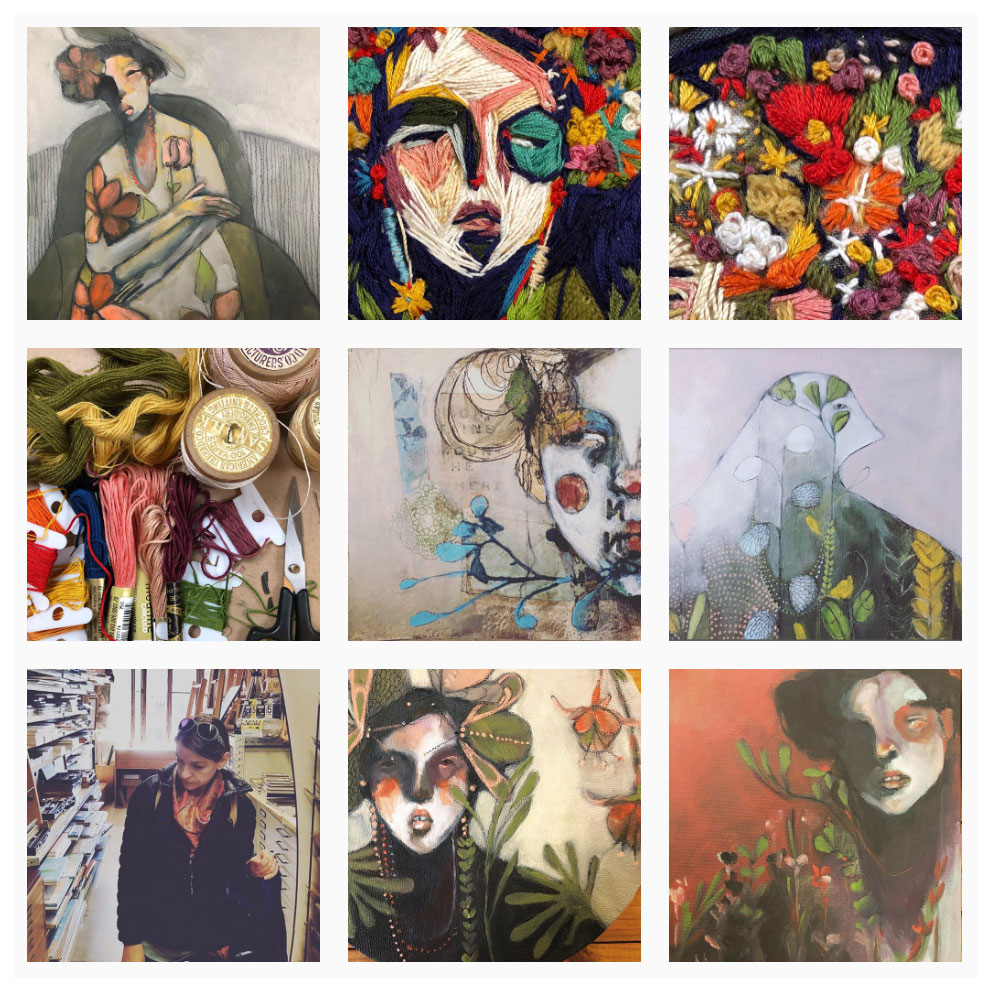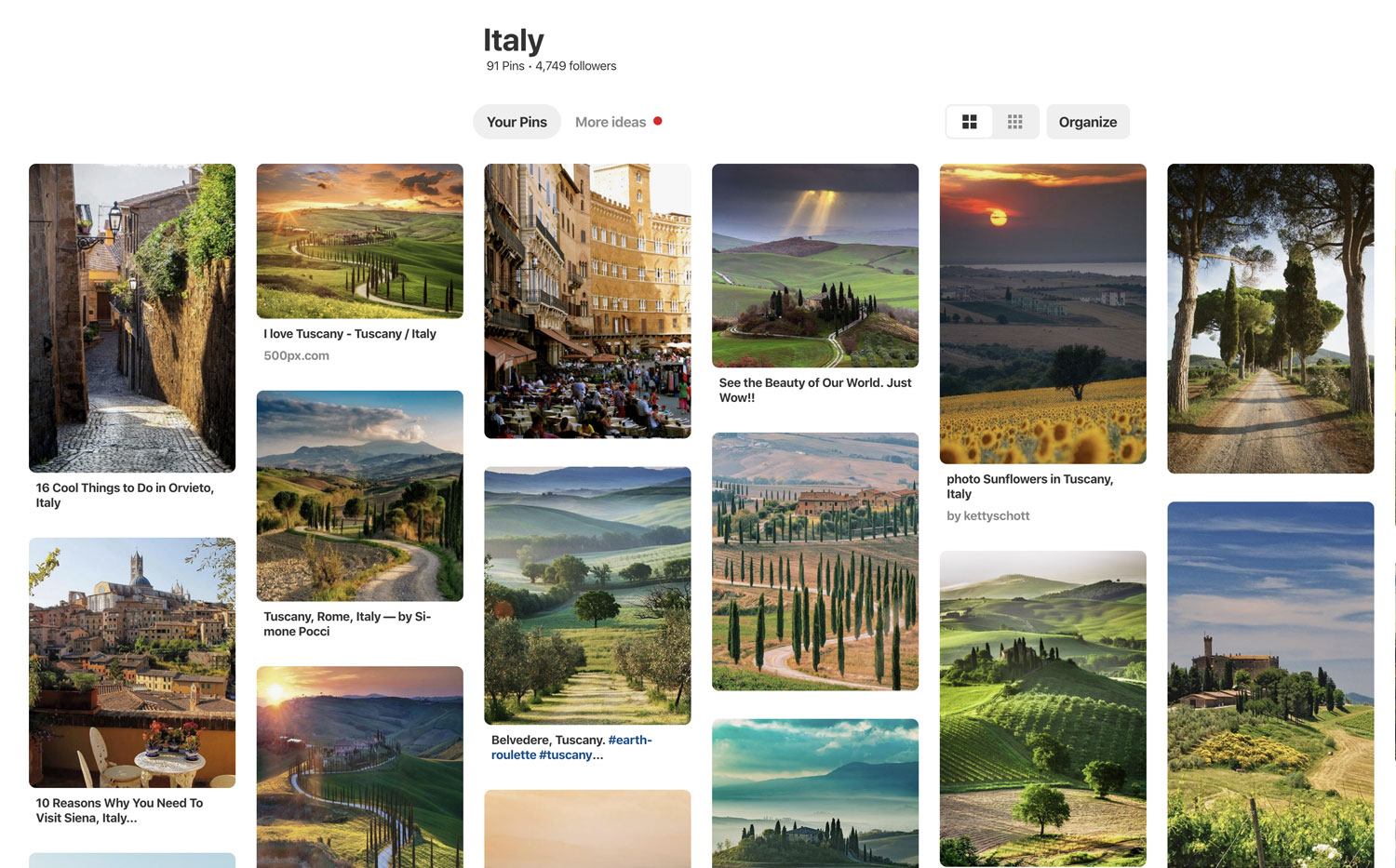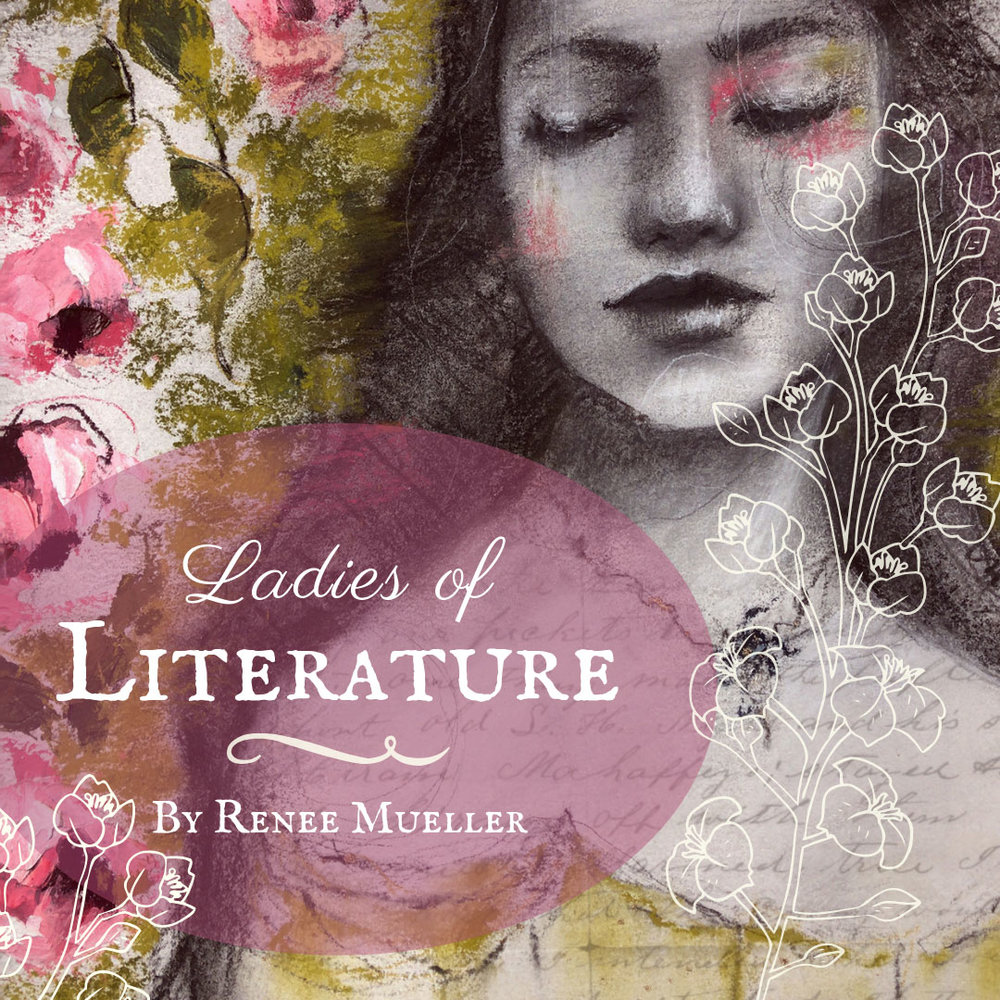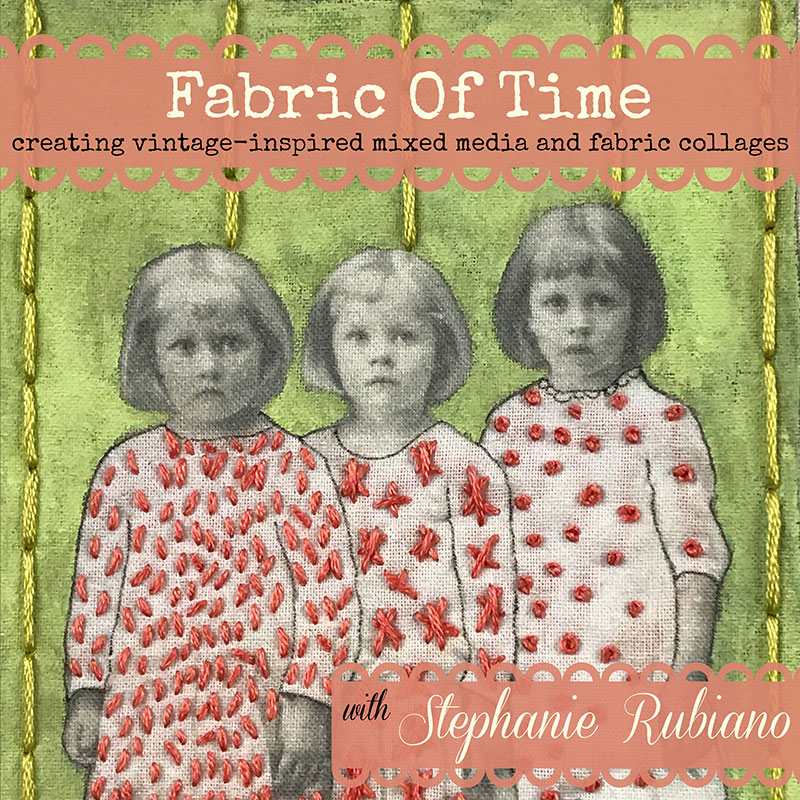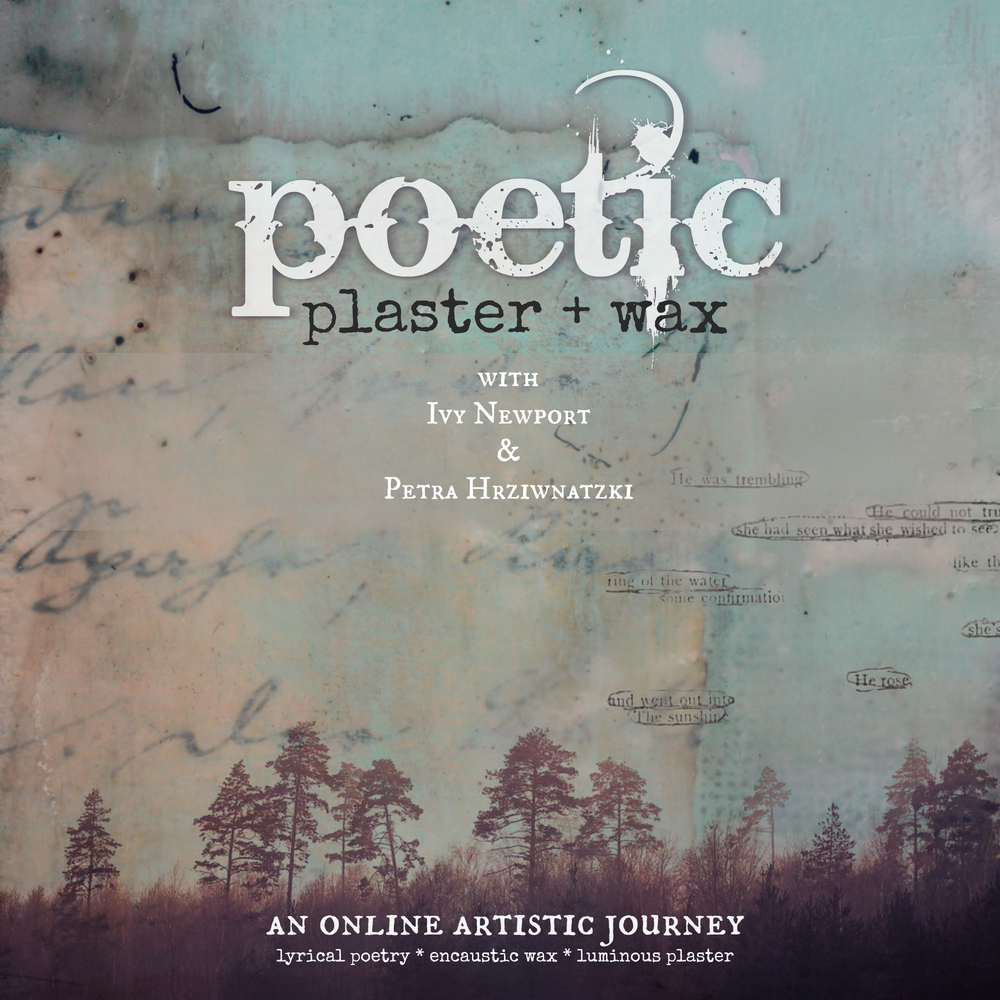IVY NEWPORT
Studioworks
Journal
a letter from ivy
Dear creative friends,
Welcome to Issue #9 of the StudioWorks Journal! As always, I’m super grateful you are here with me and I’m excited to share this with you. Many of you know, I’m heading to Italy this month so I couldn’t think of a better place to virtually take you. A place rich with color, light and story!
What a perfect place to focus on, since this month, I want us to take a deeper look at the importance of story. Stories are all around us and within us. Your story is completely unique to you and it’s telling can emerge in our artwork. As artists, we have been storytellers from the beginning of time.
Lets explore our stories and how they unfold and spill over into our creations…
xo,


So you may be wondering, where do I start? To that, I say, wherever feels right to you. Each month we will have a theme, a creative affirmation, a power word, a color palette, sketchbook exercises, art projects, articles, recommended reading and access to wonderful inspiration and resources. I want you to think of this as a delicious new magazine, you know the ones you occasionally splurge on, with soft, velvety pages, beautiful images
Each issue will invite you to explore your creative practice in whichever way works for you. Experience each issue at your own pace. Take what resonates with you and put the rest aside for another time.
Grab a cup of something lovely and dive in.
SEPTEMBER THEME
Once Upon a Time
Human beings are storytellers. From the first day we walked upon the earth, we have shared our stories. Around a fire, on cave walls, drawn in the dirt, carved into stone, painted, drawn, written, sung, danced, woven …our stories have always been told. They have always been shared. As artists, we have played an imperative role in stories being passed on and communicated throughout the ages. Often, an artist was employed to illustrate and illuminate a story. To create something beyond words. To elevate the message visually and emotionally.
It is vital to remember the importance of this. To connect with the power of being a storyteller. So many of us disregard our stories. We think they aren’t interesting enough, or exciting enough or too depressing. In reality, your story is what creates a framework for your soul. Your journey here, albeit short, is an important one. When you remember that we are all connected, it is difficult to imagine that anyone is insignificant. Therefore, your story is always worth telling. Your story is what connects you to the universe and the beings we share this lifetime with.
“Stories are medicine.”
– Clarissa Pinkola Estés
Your story can be a lamp to one lost in the darkness. Your story can be a salve to one so recently burned. Your story can be a bridge to one who feels alone. Your art is your story. The images, colors, symbols and emotions you create in your art, express (whether you realize it or not) your soul. Your journey. Your story.
The treasure within you is unearthed through the discovery of self, it is then shared through your creativity. This is imperative to an artist. By telling our own stories through our art we gain a better understanding of why we do things…why we are drawn to certain colors or styles or imagery. When we understand our art we can better communicate to others about its core meanings. When an understanding of the art occurs than both the artist and the viewer are more deeply connected.
The other incredible power of our stories is that we are the ones who choose how we share them and how we project them. Being aware of your story, you can begin to re-write the role you play. You can choose to be the victim or the victor.
What is your “Once upon a time”? Write your story in words, paint it in color, sing it under the moon, sculpt in with your hands, cry it out, whisper it, but whatever you do, tell it.
STORYTELLING PROMPT
- Listen to a piece of instrumental music. Close your eyes…what kind of story do you hear in the music. Is there a chase? A romantic moment? What kinds of images do you see in your mind? Consider illustrating the “story” of a piece of music.
“I hope you will go out and let stories happen to you, and that you will work them, water them with your tears and your blood and your laughter till they bloom, till you yourself burst into bloom.”
– Clarissa Pinkola Estés
Once Upon a Time
WORD OF THE MONTH
Story
An account of past events in someone’s life or in the evolution of something.

“Owning your story is the bravest thing you will ever do.“
– Brene Brown
While, there are several definitions for this word, we are focusing on this simple explanation. As artists, we are natural storytellers and our art expresses an evolution of our story, our journey and our soul.
EXPLORING MY STORY – WRITING
As previously discussed we are all made up of our stories and our experiences. Exploring those in a written form can be incredibly healing and yes, challenging too. When we revisit our shadows or go back and remember the joyous times in our lives we are inevitably going to experience some strong emotions. Documenting these emotions help us further process, understand and heal. It may be hard to do, but owning our story is important and vital for true integration of self. This process can also be imperative to our creative process. The more we understand our art the more we understand ourselves. Art is a vehicle, a process that unlocks the deepest parts of ourselves if we allow it.
Take at least 10 minutes of meditation before you begin to write. Set an intention that you are going to be open to this writing session and that you welcome all loving wisdom.
Let’s begin with asking some questions and have faith that you have the answers. Take deep breaths after you ask, then wait for the urge to write the answer. Don’t question your answers.
In your journal or sketchbook list these questions…
- How do I tell my story through my artwork?
- What parts of my story have I not explored yet?
- How has sharing my story helped me heal?
- Describe a vivid memory from your life’s journey, be descriptive and write about not only the scene but the emotions you experienced. This could be a positive memory or not. (Could this be expressed in your art journal or as a piece of work?)
STORYTELLING PROMPT
- Write down or journal about your top 5 favorite movies or books. Why do you LOVE the story told in these? How do they connect with your own story?
Word of the Month : Story
Monthly Affirmation
Each month we will have a positive affirmation. I recommend you print out this affirmation and put it in your sketchbook or somewhere in your studio. Recite the affirmation out loud each time you show up to create. Saying words aloud is powerful and can begin to re-write some of our own limiting beliefs or calm our fears. Try it now…
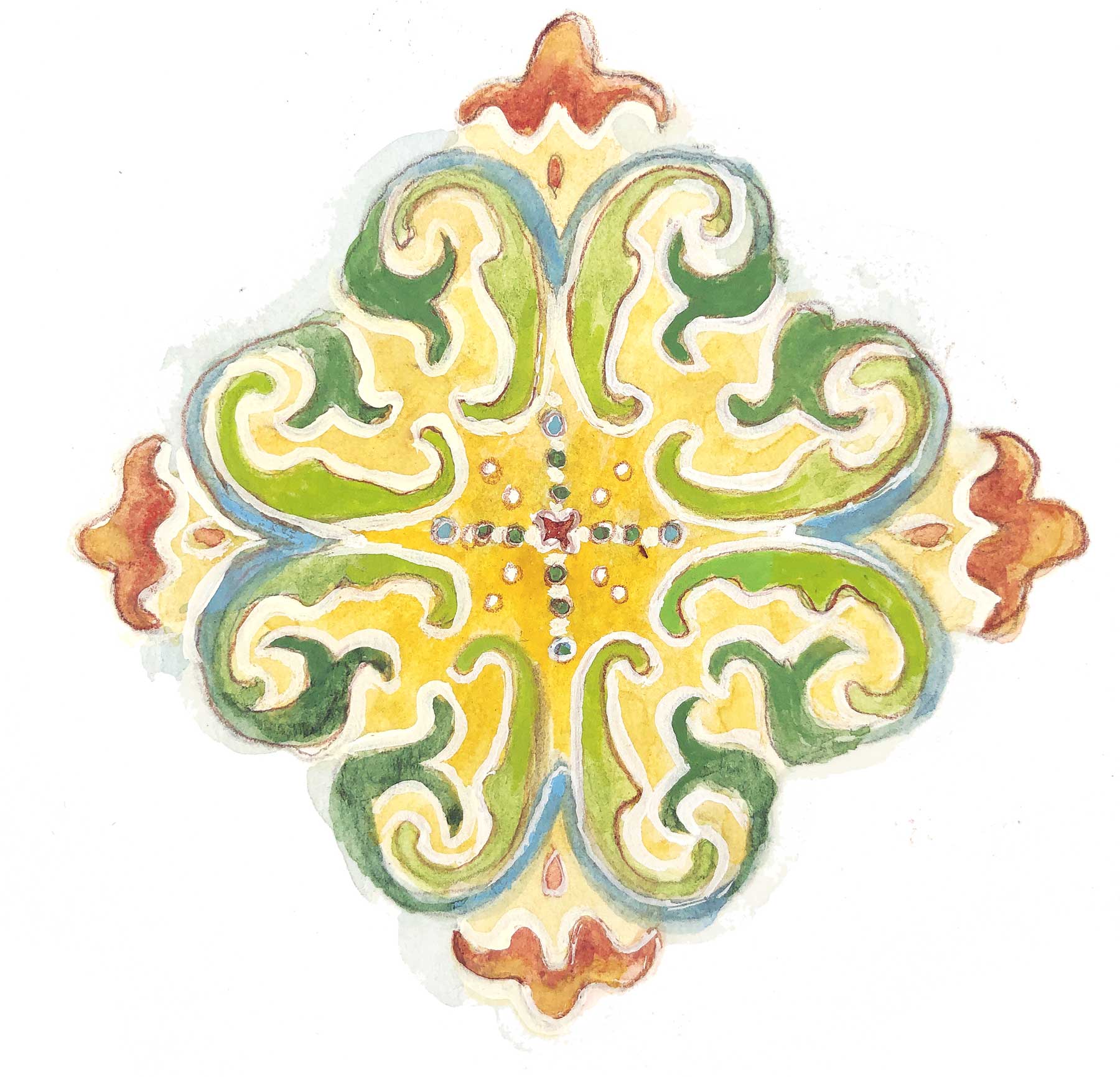
Color Palette of the Month
This month, I was inspired by the sun-drenched colors of Italy and the beauty of antique leather-bound books. These rich colors make me think of golden fields, terracotta villas, lush green hillsides, deep red wine in a crystal glass, and endless soft cornflower blue skies.
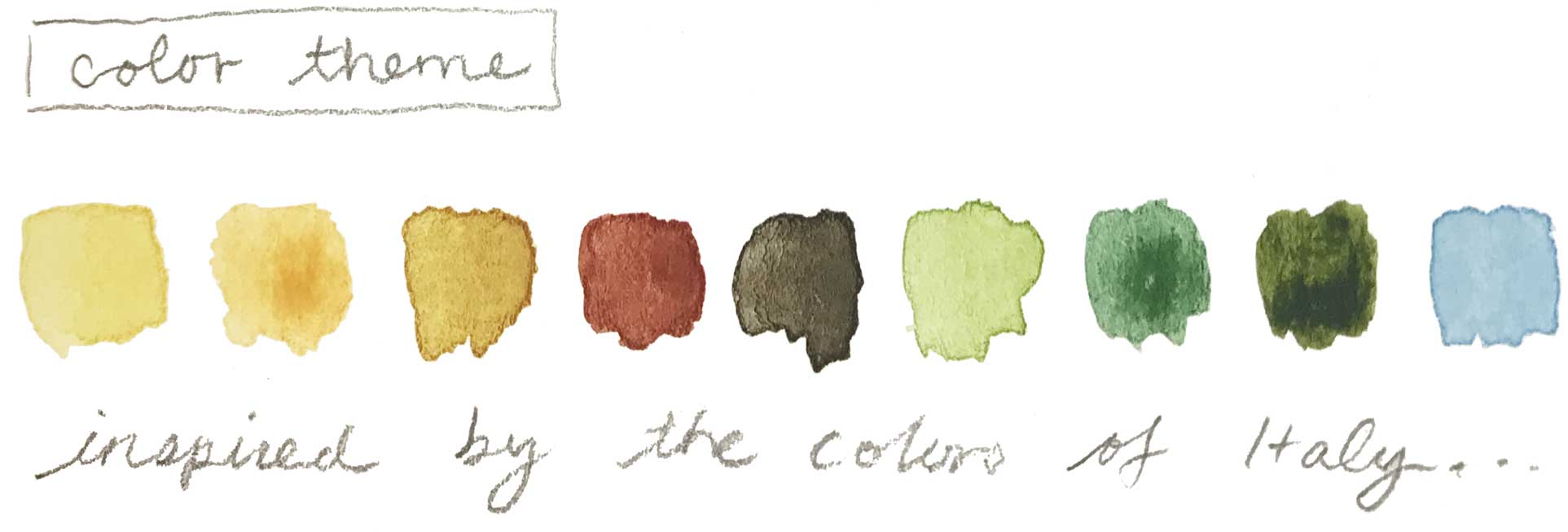
STORYTELLER PROMPT:
- Find an antique or vintage book and reclaim it as a special art journal. Gesso the pages and fill it with your own sketches, collages and mini paintings. Keep it in a special place and look at it often. Create your own story within its pages.
Journey to a Land of Stories
Travel and exploring new places has always been a way to experience new adventures for me but obviously, we can’t always hop on a plane BUT we can always read, research and learn about cultures and lands we’ve never been to. There is so much inspiration to be found in this practice! If a place calls to you, there is a good chance that it will hold some magic for you, whether or not you get to actually go there physically.
When I authored my old blog, I created a series of posts called “Vicarious Vacations”. In these posts, I would extensively research a place in the world that fascinated me and then I would share images, recipes and even sounds from these locations. My readers would comment and delight in the virtual journey. It brought me so much joy to create these so I thought I would do one with you now…
Many of you know I’m heading to Orvieto, Italy to teach with my dear friend and fellow teacher, Jeanne-Marie Webb. I’m very excited but of course only a few art friends are coming with me so for this issue, I wanted to virtually teleport you ALL to Italy with me through words, images, stories.
While Italy’s history has deep roots, reaching back to the ancient Etruscans in 800 BC, I would like us to focus on Italy’s gorgeous landscapes, the many wonderful myths that originate from this land and of course all the gorgeous Italian artwork! These elements are steeped in story!
To read more about Italy’s history click the button below.
Now, take my hand and let’s journey to the beautiful land of Italy!
Orvieto and Signorelli’s Storytelling Frescos
Let us start in Orvieto with dear old Rick Steves! He’s going to show us around Orvieto and explain Signorelli’s fresco masterpiece that resides in the Duomo. Signorelli was a master artistic storyteller and his works inspired the great Michealangelo!
A Tradition of Storytelling – Famous Italian Myths
Like all cultures, oral tradition plays an important role in Italy’s people and still does to this day. Storytelling was a way of connecting, explaining and cultivating faith in communities. Often borrowed from Greek mythology, these tales have been told for centuries and of course, incredible artwork accompanies these myths.
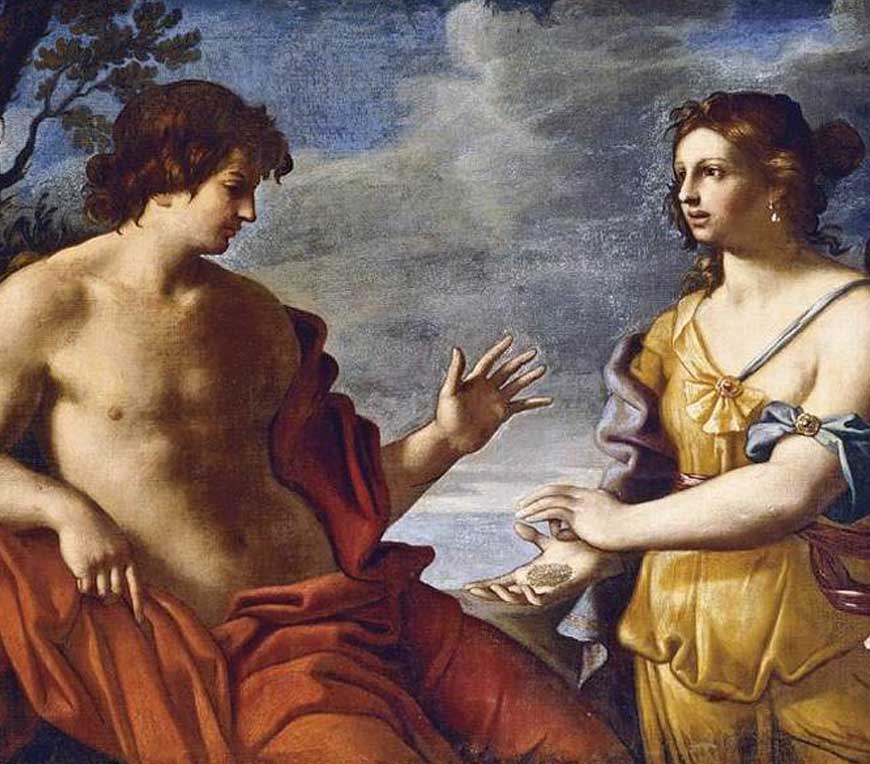
STORY OF APOLLO AND CASSANDRA
Apollo is one of the most prominent gods of the Greek and Roman pantheon. He is the only god who appears in both Greek and Roman mythology. The myth of Apollo and Cassandra was behind the fall of Troy because Cassandra was the most beautiful daughter of King Priam. Apollo was in love with her, and to make his love reach fruition he promised Cassandra the power of prophecy on her agreement to comply with his wishes. She agreed to his conditions and received the gift of prophecy.
After getting what she wanted she refused to form a union with him causing Apollo to burst into flames. He then cursed her so that no one would believe her prophecies no matter what. As a result, people began to consider her a liar and a mad woman, and she was imprisoned in a citadel by her own father. Despite several warnings to the Trojans about the Greeks, no one believed her words and Troy was ultimately destroyed.
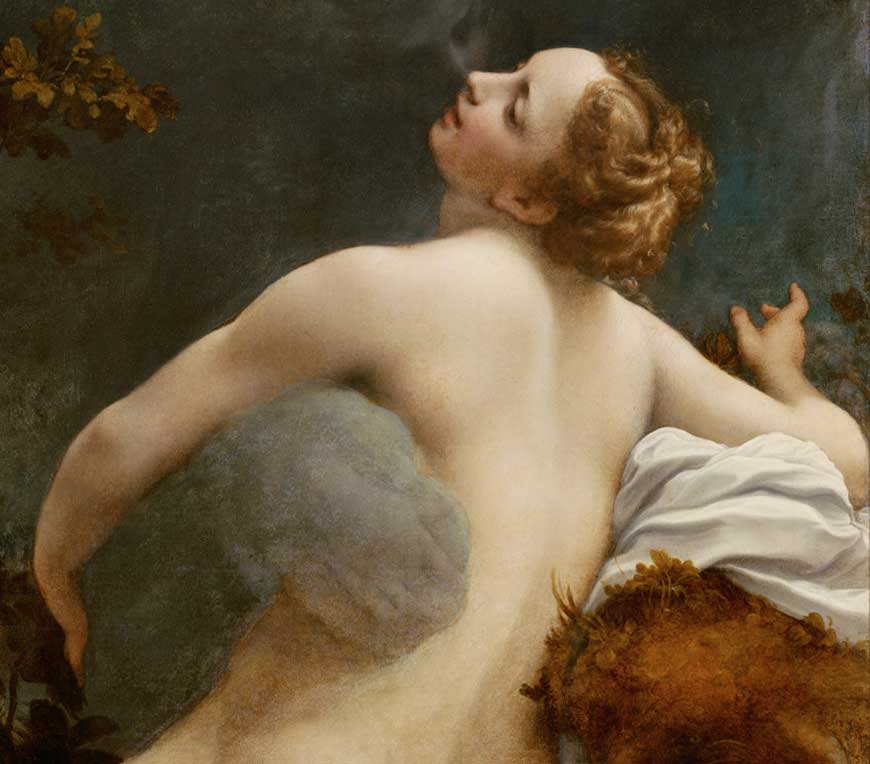
THE MYTH OF JUPITER AND LO
The priestess Io was one of the mortal lovers of Jupiter who was known for his Casanova-like behavior. Jupiter fell in love with Io and changed himself into a black cloud so that he could live closer to her while hiding from his wife, Juno. However, Juno was not a woman to be fooled. She noticed the black cloud and easily recognized it as her husband. The very moment Juno arrived on Earth, Jupiter changed Io into a white cow so as to protect her from his wife’s wrath. Despite several attempts to conceal Io, Juno found the white cow and put it under the surveillance of Argus who had a hundred eyes which were hardly ever closed.
In order to free Io, Jupiter sent his son Mercury to tell stories to Argus until he fell asleep. Mercury was successful in his task of making Argus sleep, then he killed him and freed Io. Knowing all this, Juno was so upset that she sent a venomous gadfly to sting Io, or the white cow, for a lifetime. It was only when Jupiter vowed never to chase Io again that Juno was set free from imprisonment. Afterwards, she went to Egypt, settled there and became the first Egyptian goddess.
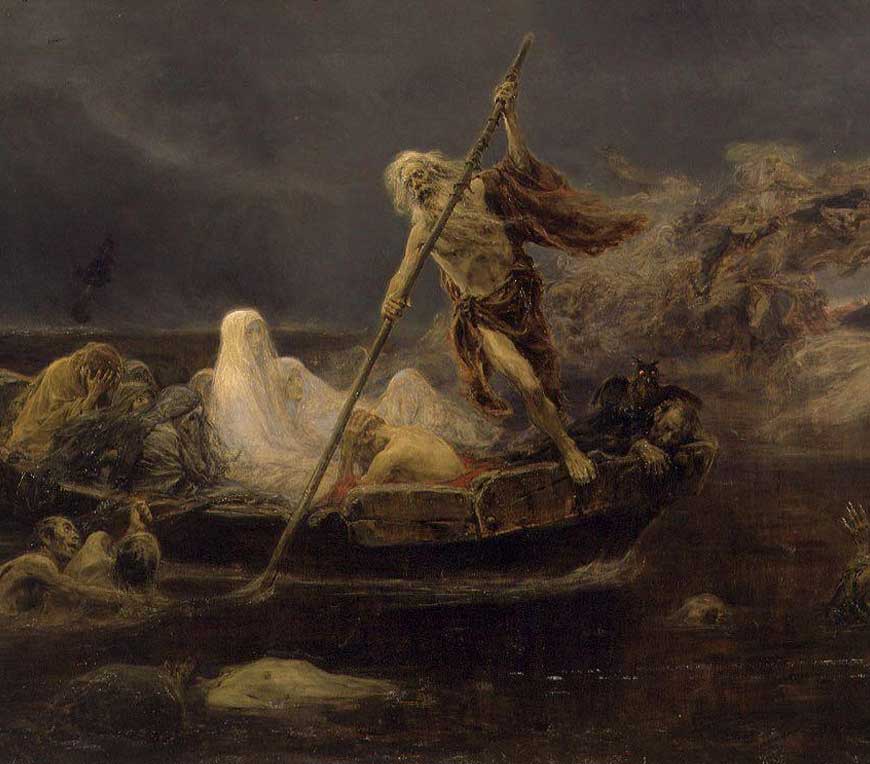
PLUTO AND THE RIVER STYX
The planet Pluto was named after the Roman god of death. Both the planet and the god signified coldness. According to Roman myth, anyone who dies has to travel to the underworld. First, the dead have to cross the Styx, also known as the River of the Dead. The dead person is buried with a coin to pay the ferryman Charon for the ride across the river.
The coin has to be kept in the mouth of the deceased, and only then will Charon transport their soul across. The planet Pluto’s moon gets its name from the boatman Charon. The water of this river was considered a bad omen as even the gods could not escape its repercussions. If anyone came into contact with it, they would lose their voice for nine years.
A Tradition of Storytelling
MASTER ARTIST GUIDE
Sandro Botticelli
This month, I couldn’t resist bringing you the work of Sandro Botticelli! I had the amazing opportunity to see his work in real life in the Uffizi Gallery in Florence,Italy and it took my breath away.
The son of a tanner, he was born Alessandro di Mariano Filipepi, but he was given the nickname ‘Botticelli’ (derived from the word ‘botticello’ meaning ‘small wine cask’). Smart beyond his years, the young Botticelli became easily bored at school. He was known for his sharp wit and his love of practical jokes, and he quickly earned a reputation as a restless, hyperactive and impatient child. Fortunately, his precocious talent was recognised and he was withdrawn from school and sent to work as an apprentice.
He began his career painting frescoes for Florentine churches and cathedrals, and by 1470, he had his own workshop.
It is thought that Botticelli first trained with Maso Finiguerra, a goldsmith, before entering the studio of the artist Fra Filippo Lippi.
Botticelli’s apprenticeship with Fra Filippo gave him excellent contacts. His master had enjoyed the patronage of some of the leading families in Florence, such as the Medici. Botticelli in turn spent almost all his life working for the Medici family and their circle of friends, for whom he painted some of his most ambitious secular paintings such as ‘Primavera’ (in the Uffizi, Florence).
in 1481, he was summoned by the Pope to Rome to help decorate the walls of the recently completed Sistine Chapel in the Vatican. He painted frescoes depicting scenes from the Life of Moses and the Temptations of Christ.
The period from 1478-90 saw Botticelli at his most creative. This was the period during which he produced his famous mythological works, such as ‘The Birth of Venus’ and ‘Venus and Mars’. In these he successfully combined a decorative use of line with elements of the classical tradition.
Ultimately, Botticelli was revered for his devotion to beauty and virtue seen in his incredible works. He was also known for depicting deep emotion in his subjects and was considered the greatest humanist painter of the Early Renaissance.
Explore and study our master artist, Sandro Botticelli and create some sketches or painting studies from his fantastic work! His figures and faces are truly masterful.
Master Artist Guide - Sandro Botticelli
AN ARTIST’S VOICE

Interview with Meg Yates
Enjoy this heartfelt interview with my amazing friend, artist & songstress – Meg Yates
How do I tell my story through my artwork/music?
This is an interesting question for me. For a very long time I wasn’t focused on telling my own story through my art or music … it would seep in, of course, but I wasn’t focused on it. I have always rested my attention on the spaces between myself and the “Other”, with the “other” taking shape in another person, the ineffable, nature, etc. Being aware of something larger through the process of creation assisted me through rather challenging times. Art is a point of access for me, one that I’ve relied on to know that my being, experiences and stories have larger context. As I’ve walked my art journey, I’ve grown into sharing more of myself more intimately through art and music, though still with aim to touch the universal.
All that being said, in visual art I give hints to story through mark making, palate, positioning. For instance: white dots serve as both stars and pearls, both meaning wisdom of the collective as experienced by the character(s) that are visible within a painting. The boldness or softness of the palate often indicates the clarity in which I am exploring a subject, or the settledness of my understanding. When I’m leaning on a more raw/primary palate, something is often new to my understanding, while softer but saturated colors indicate to me that I’m more rooted in my understanding. Open eyes, closed eyes, facing left or right, covered or exposed … these are aspects of my visual vocabulary.
Music is comparable in that my aim is less singular/personal and more universal — and that I’ve grown into sharing more directly, more intimately. Both expressions are relatively raw modalities for me. I dive in, with rare hesitation or much editing. I think “myself” is shared more in process or approach than in what lands with any finality of form. I am most honest in expression in process.
How has sharing my story helped me heal?
Sharing my stories brings them, me to broader witness and allows me to see myself in relationship with others, who often have shared experiences. This brings so much solace to me, to know I’m not alone. Art brings what is not easily collapsed into words, into form and makes it shareable. Thank goodness for that! There’s so, SO much inside of me that is not in word form — and I have little desire to collapse the richness of my inner life into such limited containers. Making and sharing brings so much connection, so much intimacy with others in ways that would not likely otherwise happen. Folks write to me regularly in response to my daily painting practice sharing their dreams and visions as related to their experience(s) of particular paintings. Their sharing opens up my own experience of those paintings and brings me to new perspective and potential for healing.
Describe a vivid memory from your story, be descriptive and write about not only the scene but the emotions you experienced.
This last year was very hard. My husband cheated on me with one of my closest friends, and my epileptic activity was off the charts. I was married for nearly 10 years, and never imagined this would happen. When my now ex husband told me what happened, my body released a primal, guttural sound that shocked me! I then ran out of the room and screamed as loud as I possibly could, while my body wanted to buckle in on itself and disappear.
I create a painting every day, and it was so curious to see the paintings that happened as my husband was having his affair when I didn’t know. They were naming what I didn’t cognitively know with incredible honesty. One of the paintings I’m thinking of is titled, “May We Have Ears To Hear What Is Not Being Said With Words”, and it’s a woman’s face with very tired eyes and a lotus/lily stuffed in her mouth. Eeeeep. My practice was helping me process emotionally before I really knew what was up. The pain of the paintings in the days that followed, the honesty of what could be said in paint more than my broken heart could muster is still vivid for me. I poured myself into each piece of paper for months, allowing anything that needed to come through land, bit by bit on the page. Having daily practice has been so essential, but during those first few months of separation and intense grief, it was a lifesaver. I had a place to bring my unadulterated self every day without fear of burdening anyone else. It was essential to my well being, to my sense of self and agency to not only create a painting every day that aided me in my emotional process, but also to share them as I had shared my daily practice every day prior for years. I had set a precedent of honesty and inclusion into not only my process as an artist, but also as a whole person.
What words of advice would you give to other artists wishing to share their story through their artwork?
I’ve found it fulfilling to create visual (or audio) vocabulary for myself that touch on important aspects of my inner life, a personal language that has meaning for me that allows me to say many things without telling everything. As named before, mark making is a way that I “say without saying” — and I arrived at my personal “mark bank” by practicing making all kinds of marks and noticing which ones give me feeling when I make them. In addition, I Highly recommend having a daily practice. It can be anything, and will likely evolve/change until you land on just the right thing. This is a tricky recommendation … I’ve witnessed many folks ensnared by the confinements of discipline. I recommend it none-the-less. I suppose I’d add, be open to changing your practice if it doesn’t feel right. It took me nearly a decade of trial and error to find my right practice of creating/completing a piece of art on a 6×8” piece of mixed media paper every day. My commitment started with 30 days, progressed to a year and I’m now in my 4th year of practice. I’ve uncovered so much of my inner life, and shared more than I ever would or could through this practice.
To learn more about Meg and follow her beautiful creative journey, you can visit her inside our CREATIVE TRIBE
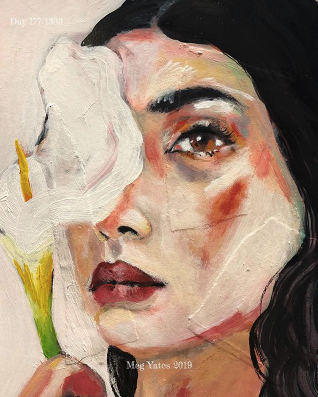
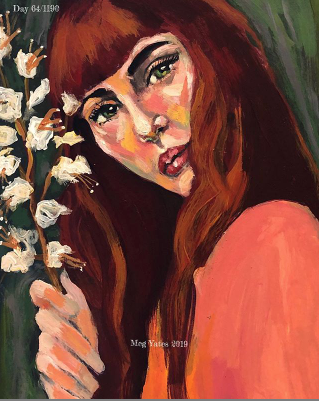
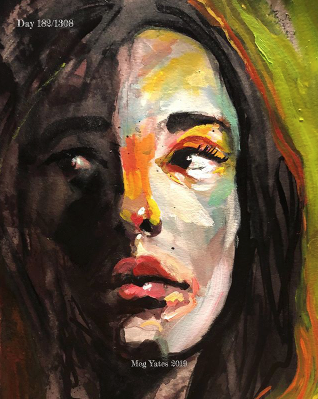
A Bevy of Goddesses
Like all cultures, Italy has a vast and unique cast of mythical characters. Gods and Goddesses, heroes and villains. I have always loved mythology and of course, who doesn’t love the idea of powerful Goddesses, fierce, gentle, wise, passionate, these archetypes have fascinated artists for centuries and a great many beautiful pieces have been created from their inspiring tales. Here are a few of my favorite Goddesses from Roman myth…
- Juno – The Roman equivalent of Hera, the Greek queen of goddesses, Juno is considered as a counsellor and protector of the state. The daughter of Saturn, Juno is both the sister and the wife of the king of gods, Jupiter. She is the mother of the god of war and god of fire, Mars. Also the goddess of marriage and childbirth, Juno connects the ideas of vitality, energy and eternal youthfulness. Juno is a majestic figure and she is often pictured dressed in a goatskin cloak sitting with a peacock, which is her main symbol.
- Minerva – Minerva is the goddess of wisdom, commerce, poetry, handicrafts, and strategic warfare. Minerva has been seen as the equivalent of the Greek goddess Athena. Minerva was also known as Minerva Medica meaning goddess of medicine and physicians. The coinage of many different emperors had her figure on the reverse side. She is often depicted wearing full armor and holding an owl and a spear.
- Flora – Goddess of Flowers and Spring. Representing the beauty of flowers and nature, Flora’s association with spring made her an important Roman goddess. Not only is she connected with the season of rejuvenation but also with budding youth. Chloris is her Greek counterpart. Flora’s name is derived from the Latin word flos meaning flower. The Romans used to celebrate the renewal of the cycle of life, flowers, and drinking with the festival of Floralia which took place on April 28 and May 3 and was first started in 240 BC. May 23 was the date of another festival in her name, the Rose Festival. Flora also became a prominent figure among Renaissance humanists, but she is said not to have enjoyed having such a powerful image.
- Vesta – Virgin Goddess of Family, Home, and Hearth. Just like Hestia in the Greek pantheon, Vesta was rarely depicted in human form, instead being represented by the fire of her temples. Only the priestesses, known as Vestas, were allowed into her temples and myth has it that her followers could be miraculously impregnated. She was the daughter of Saturn and Ops, and sister of Jupiter, Neptune, Juno, Pluto, and Ceres. Her worship first began in Lavinium, which was also the first Trojan settlement. As well as being known for her purity and virginity, she was also the mother who granted fertility.
- Venus – Goddess of Love, Desire, Sex, and Prosperity. Venus, one of the central deities of Rome, is the mother of Cupid and Aneas. The Romans adopted the mythology and iconography of her Greek equivalent, Aphrodite. Embodying sex, charm, and allure, Venus has been described as the most original creation in the Roman pantheon.
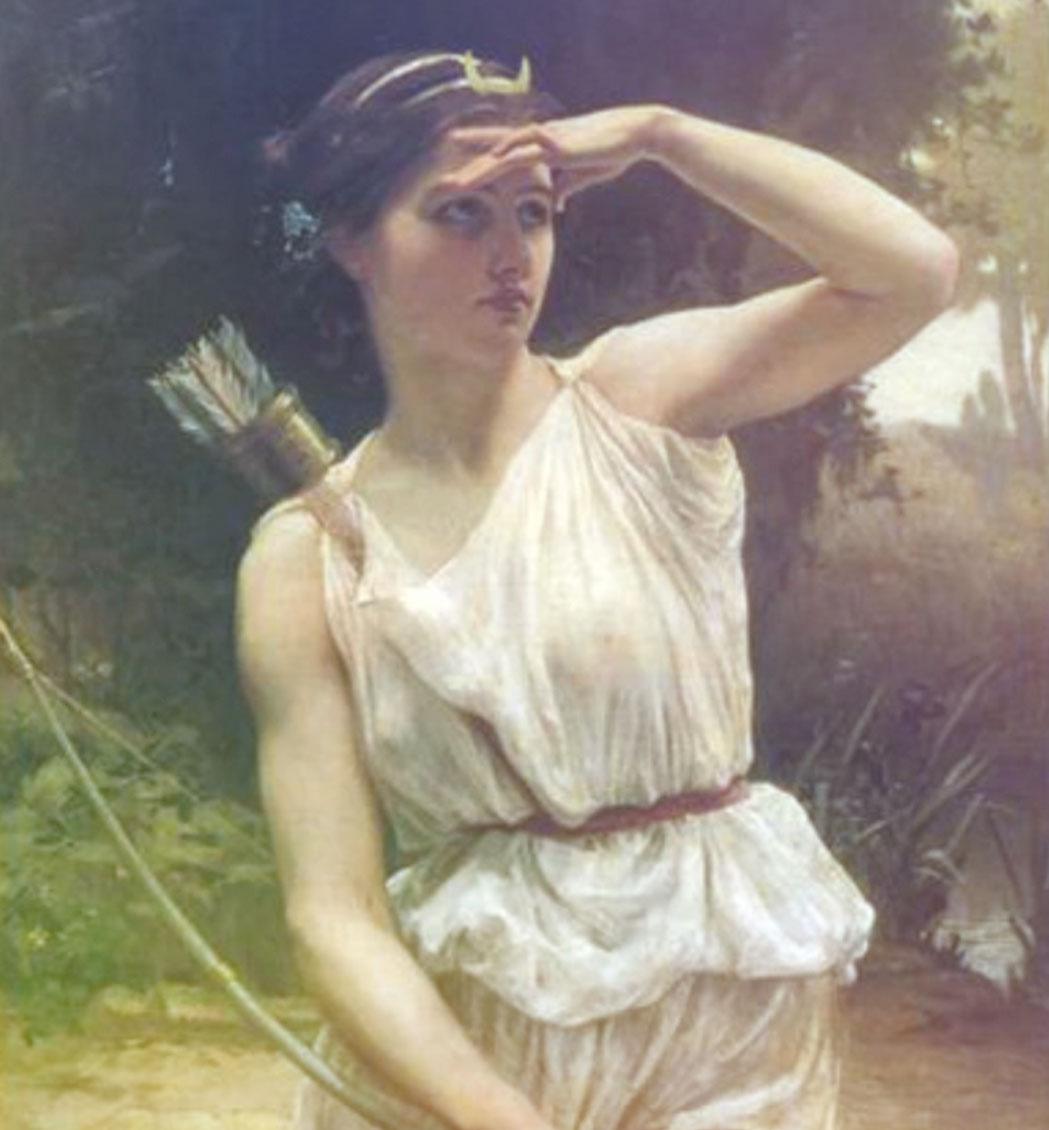
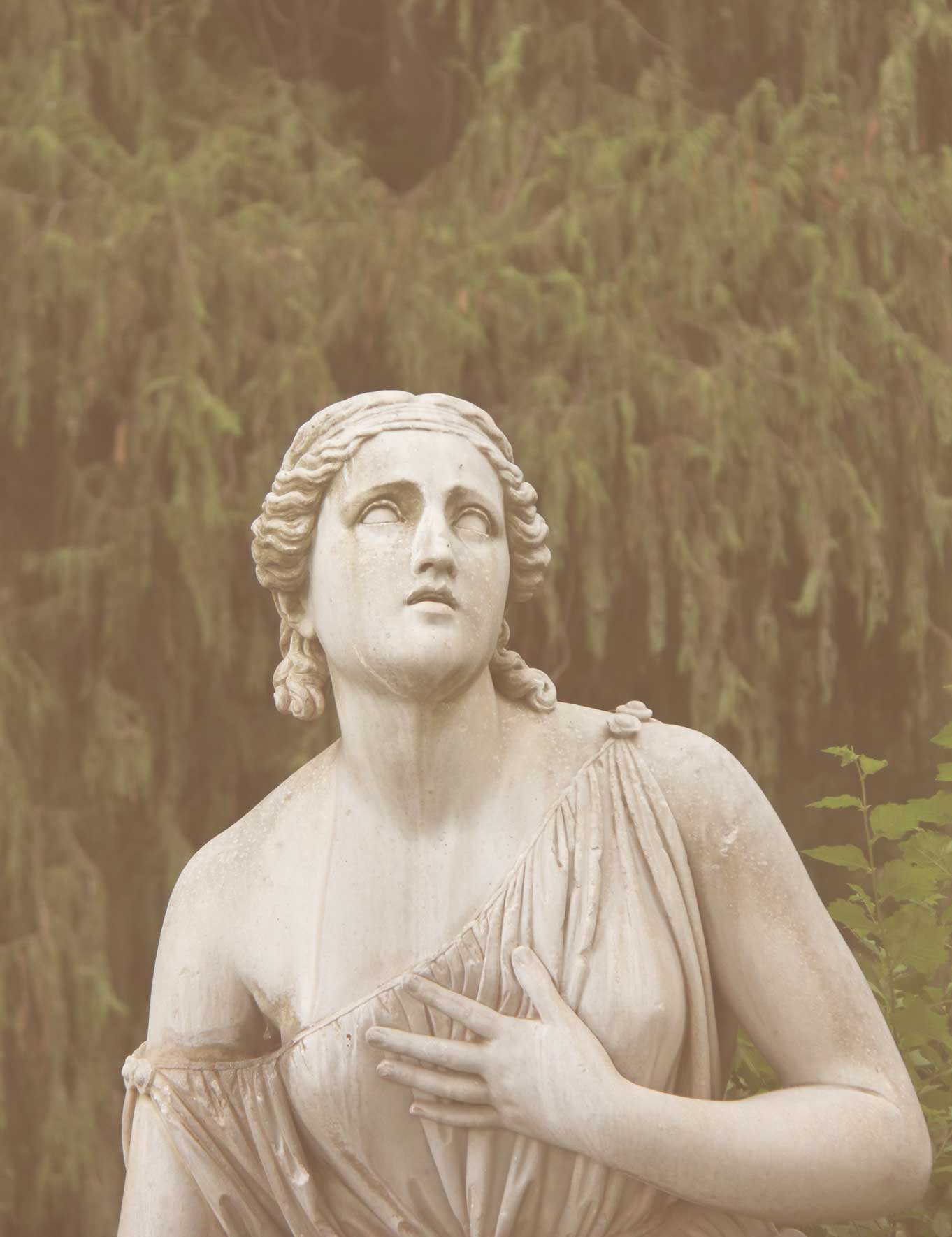
- Ceres – Goddess of Agriculture and Motherly Relationships. Ceres’ love of and service to mankind is the equivalent of the Greek goddess, Demeter. As the goddess of cultivation, she taught people not only how to grow crops but also how to grow as a person. She gave the gift of agriculture to mankind. This benevolent goddess was the only goddess to be involved in the day-to-day lives of ordinary people. She was the protector of maidenhood, womanhood, and motherhood. Ceres was worshipped on Aventine Hill, one of the seven hills of ancient Rome, where her temple stood.
- Diana – Goddess of the Hunt and the Moon. Diana’s association with woodlands and the animals gave her the power to communicate with animals and also control them. She was widely worshiped in ancient Rome. She was one of the three maiden goddesses along with Minerva and Vesta and is closely associated with childbirth and women. Like the other two, she swore never to get married. She was the daughter of Jupiter and Latona and was born on the island of Delos with her twin brother Apollo. Her celestial nature is showcased in her connection with virginity, inaccessibility, light, and her preference for dwelling in sacred woods and high mountains. She is often seen wearing a short tunic and hunting boots, carrying a quiver on her shoulder, and accompanied by either hunting dogs or a deer. Moreover, she is always portrayed as being young and beautiful.
These are only a few of the Goddesses from Roman Mythology. Which ones fascinate you the most? I encourage you to learn more about them!
Of course there is plenty of Roman Goddess inspired artwork! I have complied a Pinterest board filled with images to inspire you.
STORYTELLER PROMPT
- Pick your favorite childhood story…illustrate it in your sketchbook. You can draw, collage or paint your chosen story. Why do you love this particular tale? Jot down your thoughts, memories and feelings.
A Bevy of Goddesses
Sketchbook Explorations
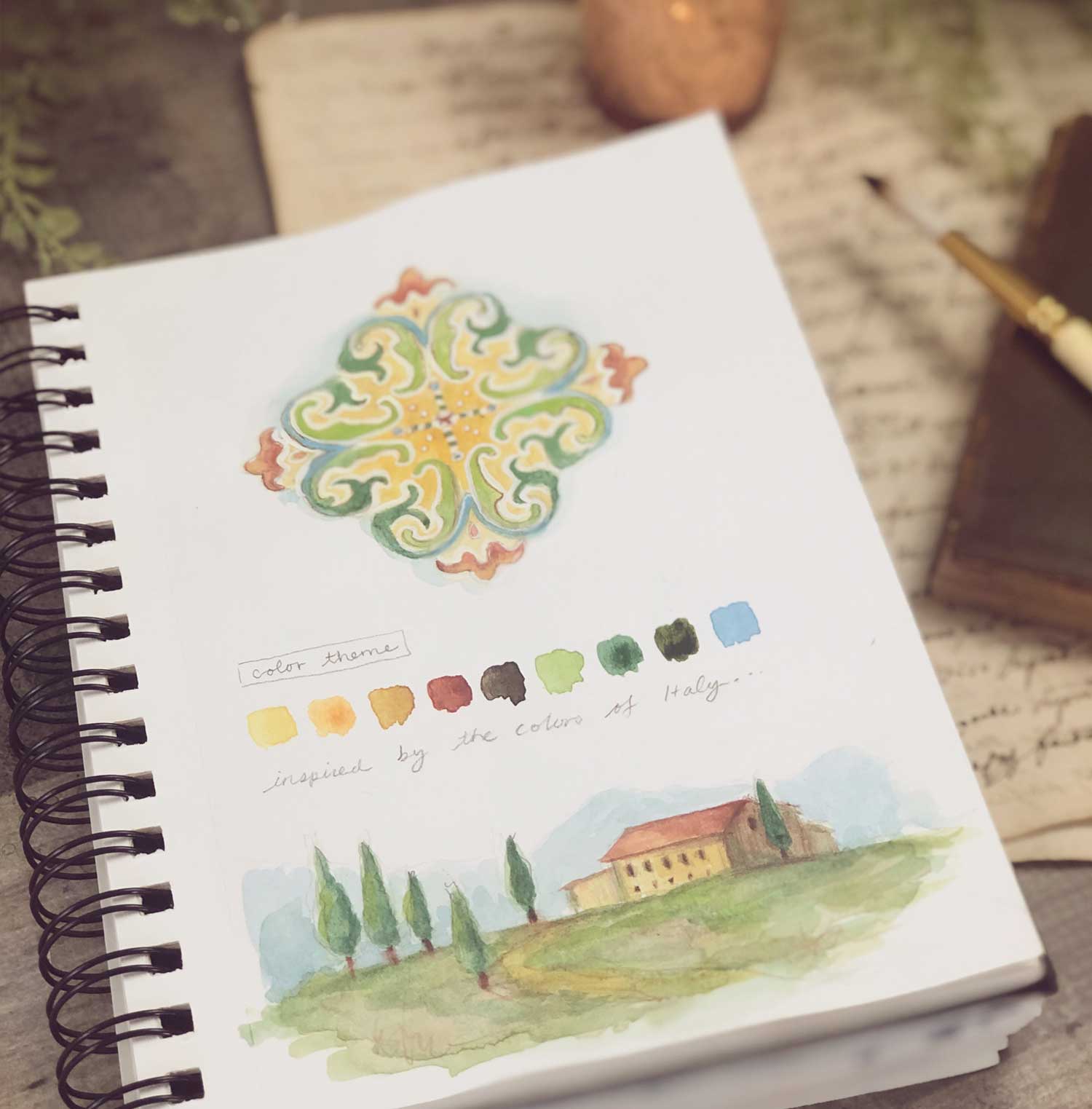
Before we begin our explorations, I wanted to provide a cohesive theme for us to focus on. This will help unify our explorations and provides us with a simple place to start when approaching a VERY white and VERY blank sketchbook.
Our sketchbook theme this month is storytelling and of course, Italy. We will be exploring some ways for us to express our stories and we will of course be inspired by the wonderful mythology and landscapes of Italian culture.
Please remember, our explorations in our sketchbook are really just access points to get you into the flow. However, they can also be seeds for new ideas, concepts and themes in your art. Some of them will be more about writing and others more about drawing and painting. You will see below three prompts and exercises explained and photographed from my own sketchbook. You are welcome to expand upon, invent and experiment with your own concepts too. Use our color palette if you want to. You will see I stay in that theme for my explorations. These may feel silly at first but let your inner artist play.
“Stories are light. Light is precious in a world so dark. Begin at the beginning. Tell a story. Make some light.”
– Kate DiCamillo
EXPLORATION 1
Botticelli Study
Choose a Botticelli sketch or painting (or part of the painting) and do a study of it within your sketchbook.
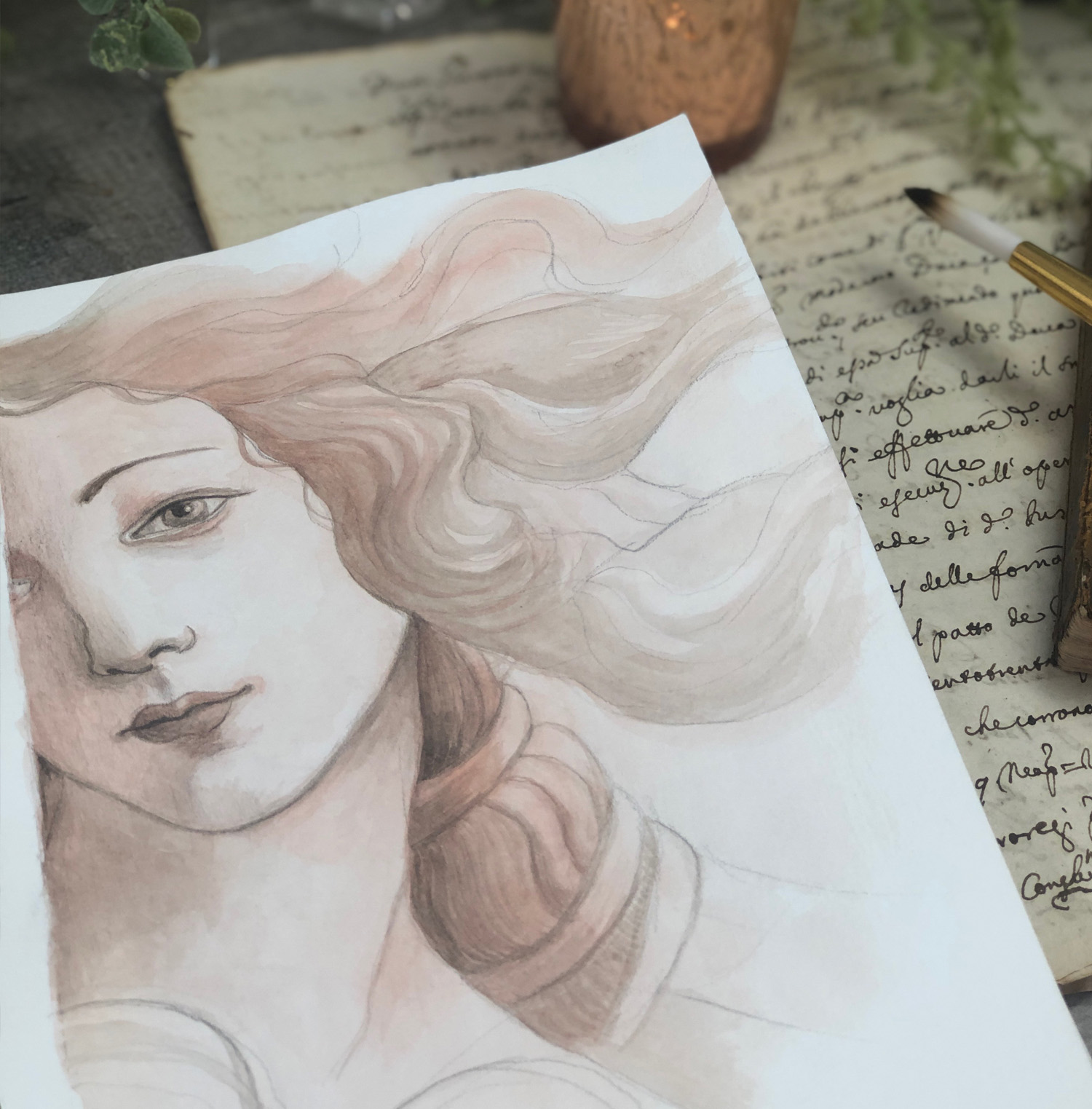
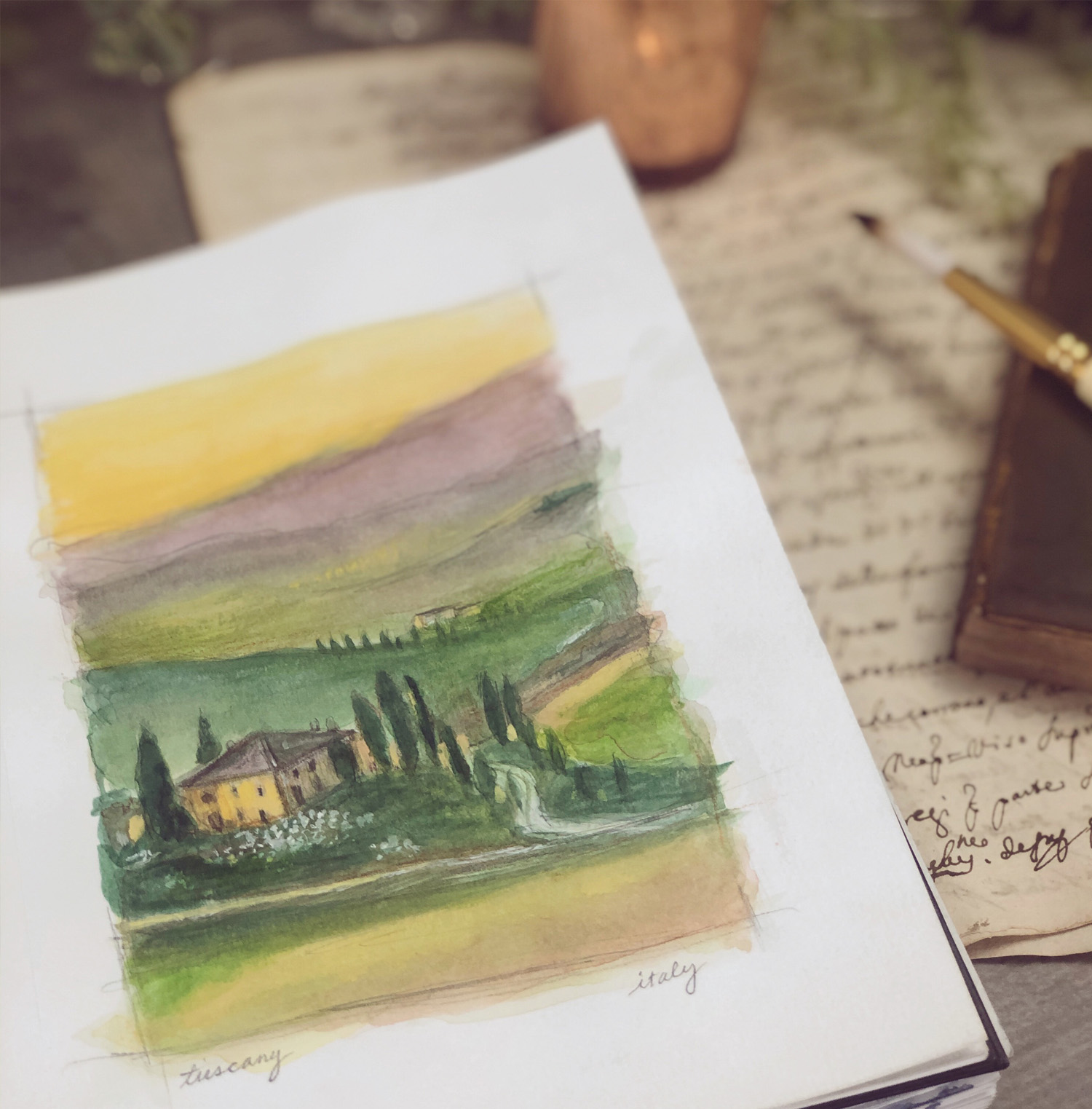
EXPLORATION 2
An Italian Landscape
Enjoy the Pinterest board, I have created for you of Italian landscapes. Pick one you love and do a small painting or sketch of it in your sketchbook. What do you love about it? What feelings does it evoke in you? Make note of this.
EXPLORATION 3
Myth Inspired
From the mythological stories or Roman goddesses mentioned, sketch, collage or paint a scene, character or element of your choice. Why are you most drawn to the story or symbology of this Goddess. How does she relate to you?
I curated some copyright free portrait images that I thought might inspire you…
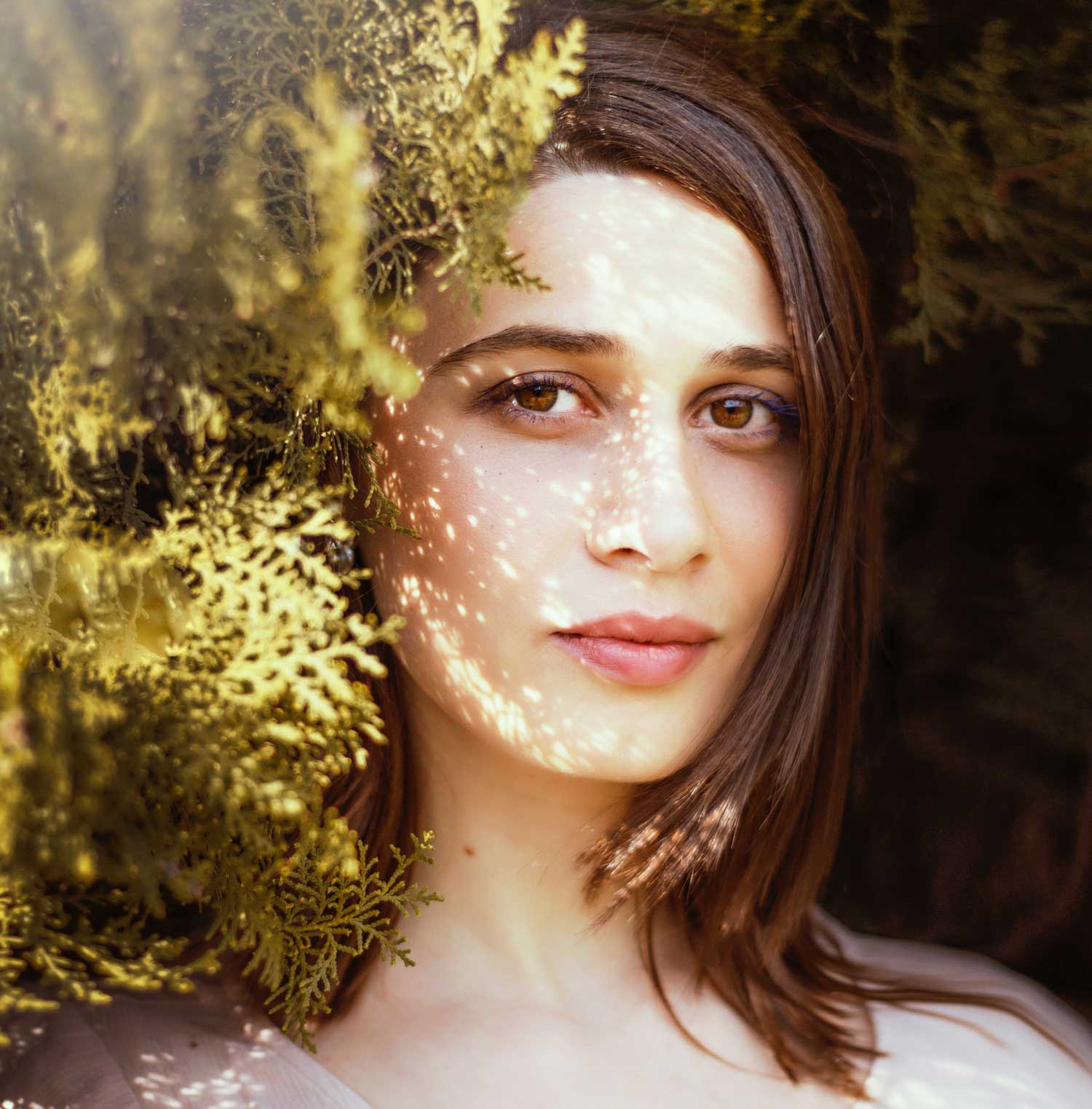
SEPTEMBER ART PROJECT
Jupiter & Io – A Storytelling Collage
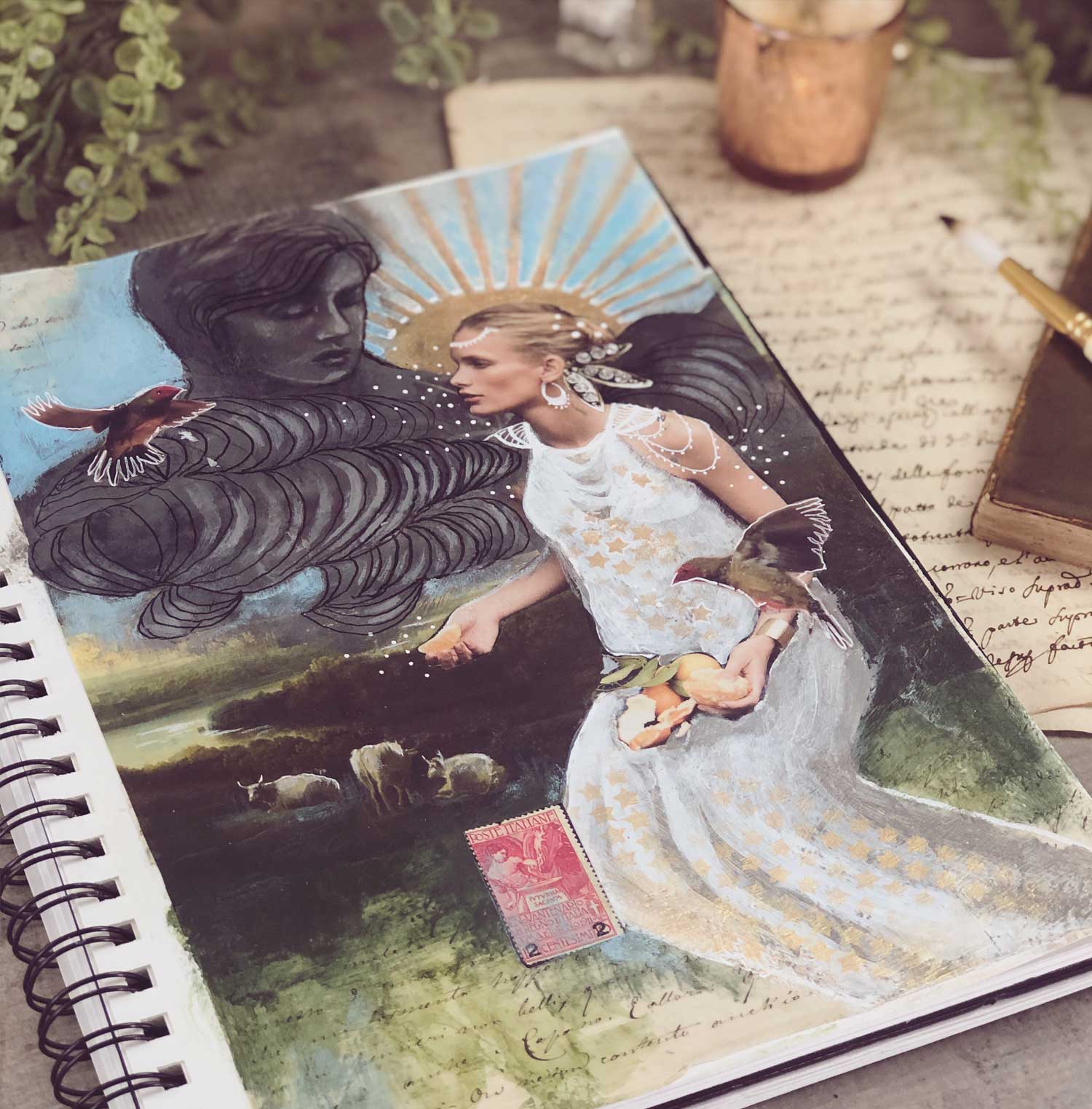
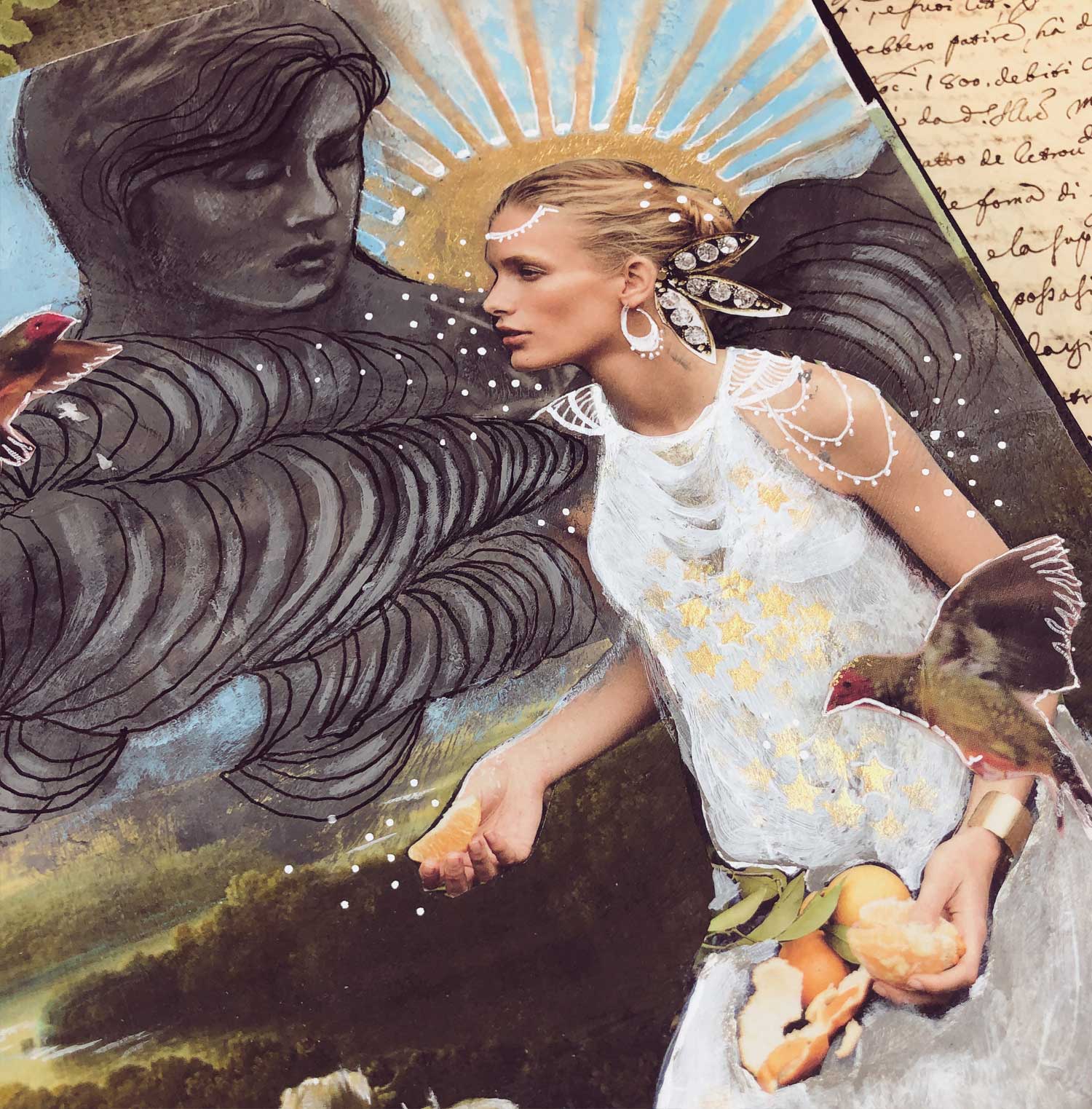
I loved creating with storytelling collage inspired by this Roman myth! It came with such wonderful imagery, I couldn’t help but gather together my characters and create my own version of Io & Jupiter!
Enjoy going through your collage materials and old magazines. This is a favorite activity of mine and I often do it while sipping tea and listening to music. Let your imagination wander and don’t over think your selections. Make a pile of all the things that call to you and remind you of this story or one of your choosing!
Learning to gather imagery and symbols to convey a story is a valuable exercise and one that you can incorporate into all your art pieces!
Have fun! I can’t wait to see what kind of storytelling collage you create!
“If you own this story you get to write the ending.“
– Brene Brown
STUDIOWORKS PODCAST
September: issue nine
You can also listen to this month’s issue of the Studioworks journal. I find I love listening to books, podcasts and music while I draw, paint or go on a long walk. Enjoy.
Studioworks : issue nine

inspiration: curated
One of my favorite things to do is to curate inspiration. From Pinterest boards to books, resources, playlists and more – I love to share anything that might facilitate learning, expansion, and sparks of curiosity! Being an artist, we naturally crave these things so here are some of this month’s picks from me to you.
BOOKS OF ART & STORYTELLING
MUSIC PLAYLIST
I had so much fun curating this list. I hope you enjoy!!
INSTAGRAM MUSES
These feeds capture our mood of the month and tell beautiful stories through art.
YOUTUBE VIDEOS
PINTEREST BOARDS
FAVORITE SUPPLIES THIS MONTH
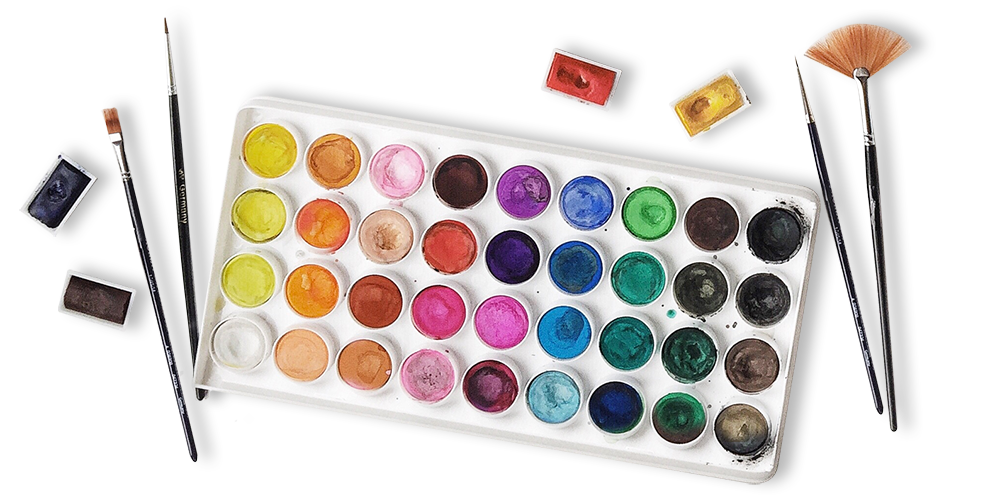
CLASSES TO TRY
These classes carry much of the same feeling of magic and exploration. I highly recommend checking them out if you haven’t already. Enjoy!

© 2019 IVYNEWPORT, LLC ALL RIGHTS RESERVED.

